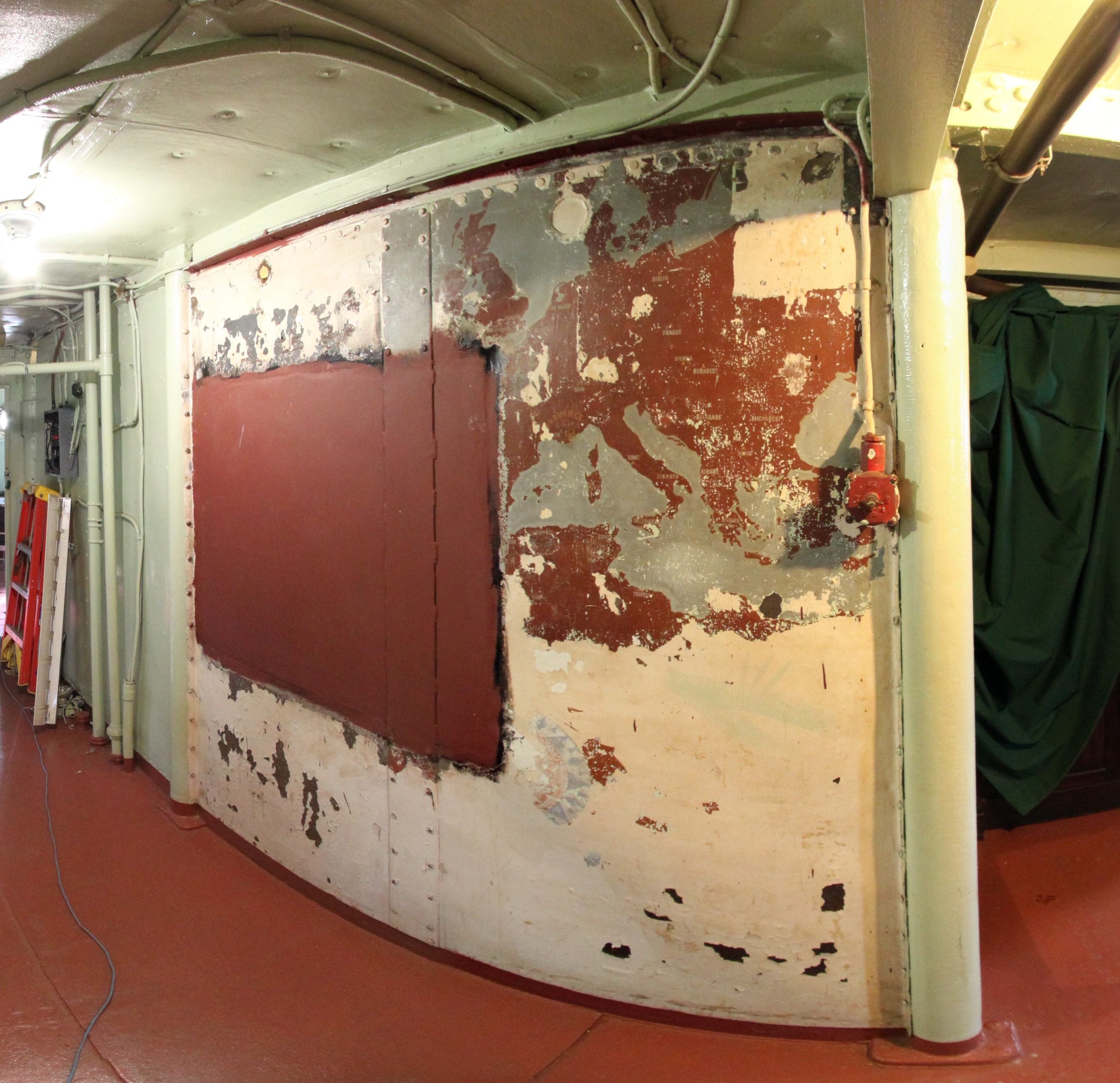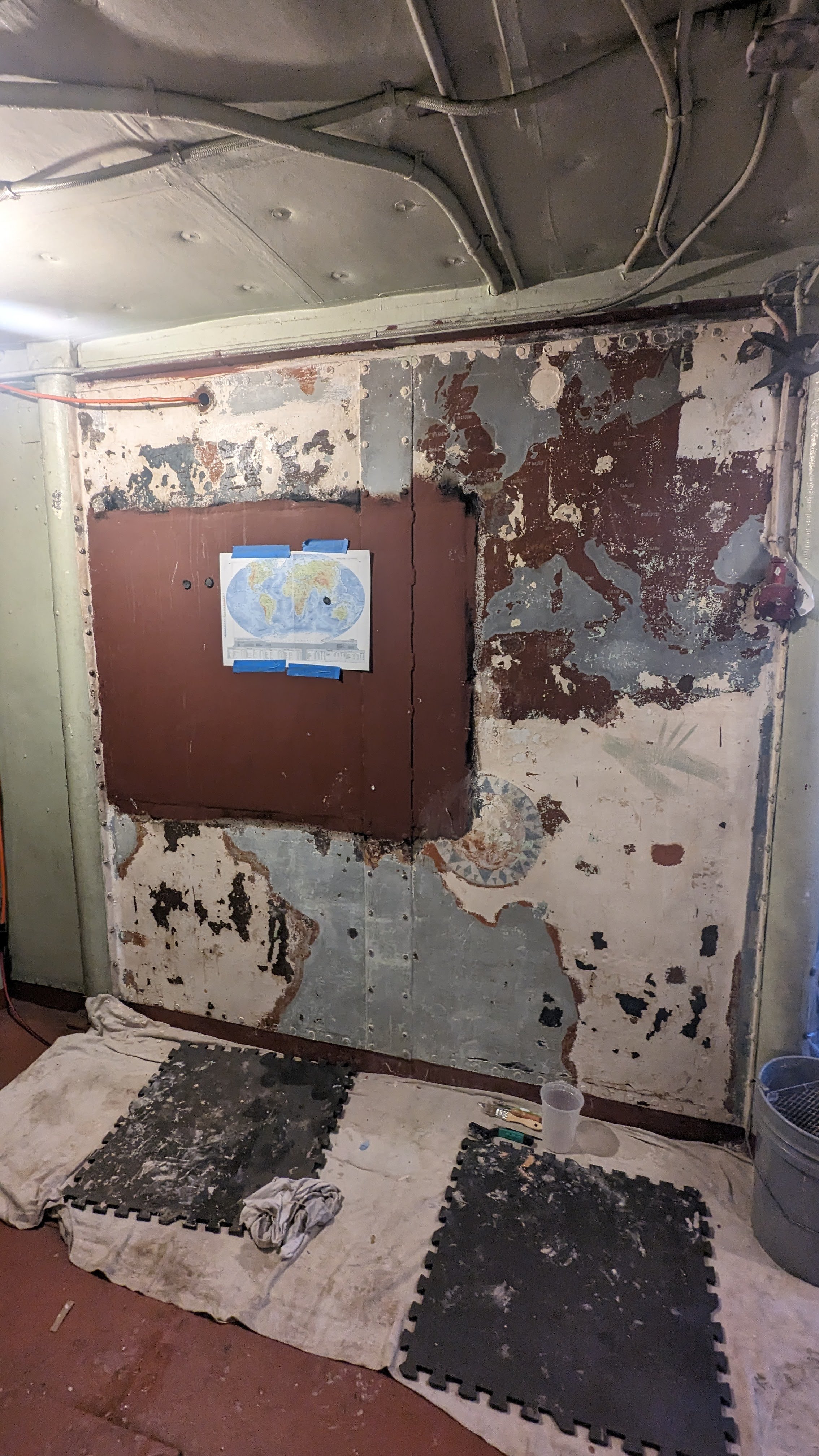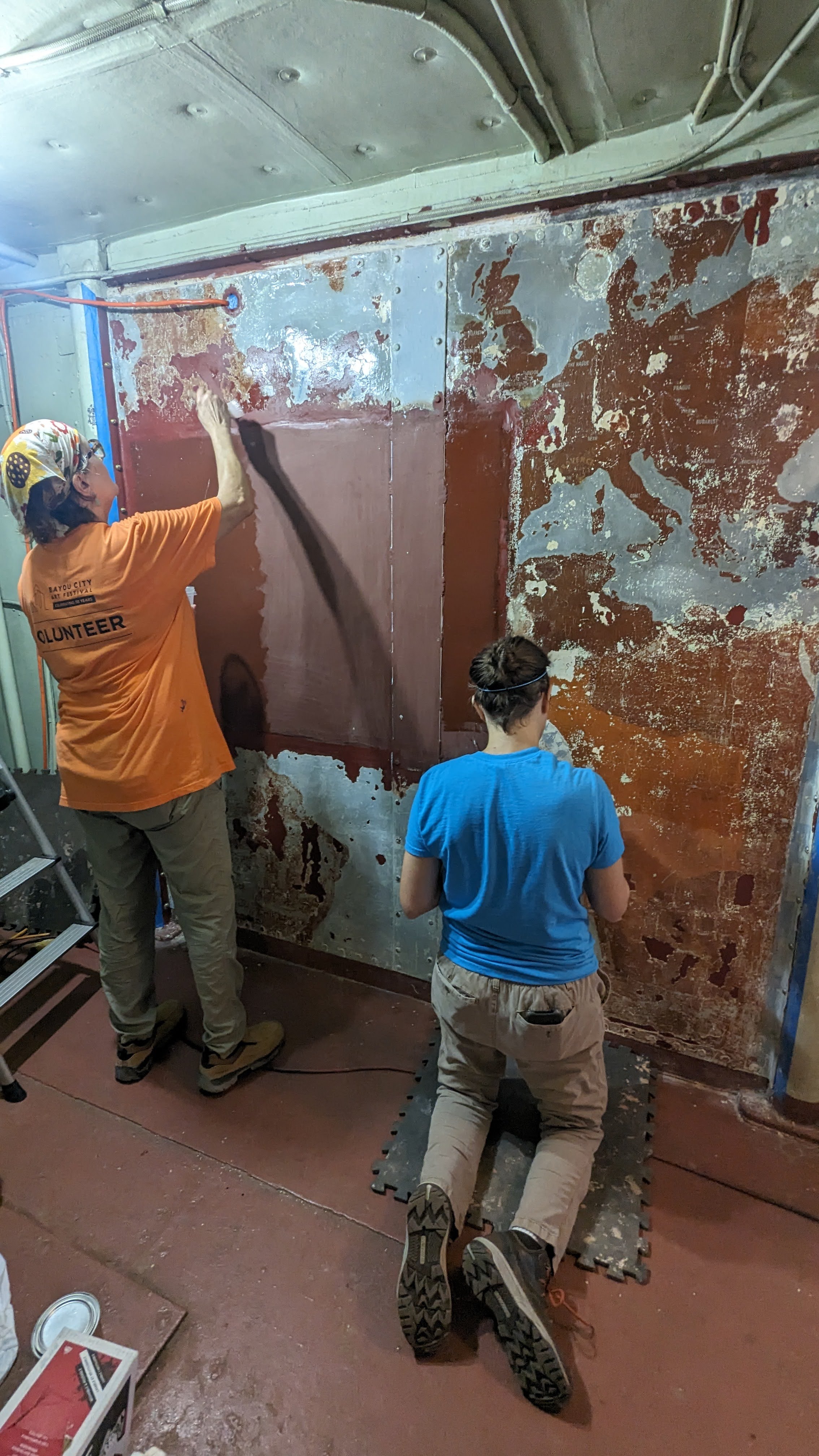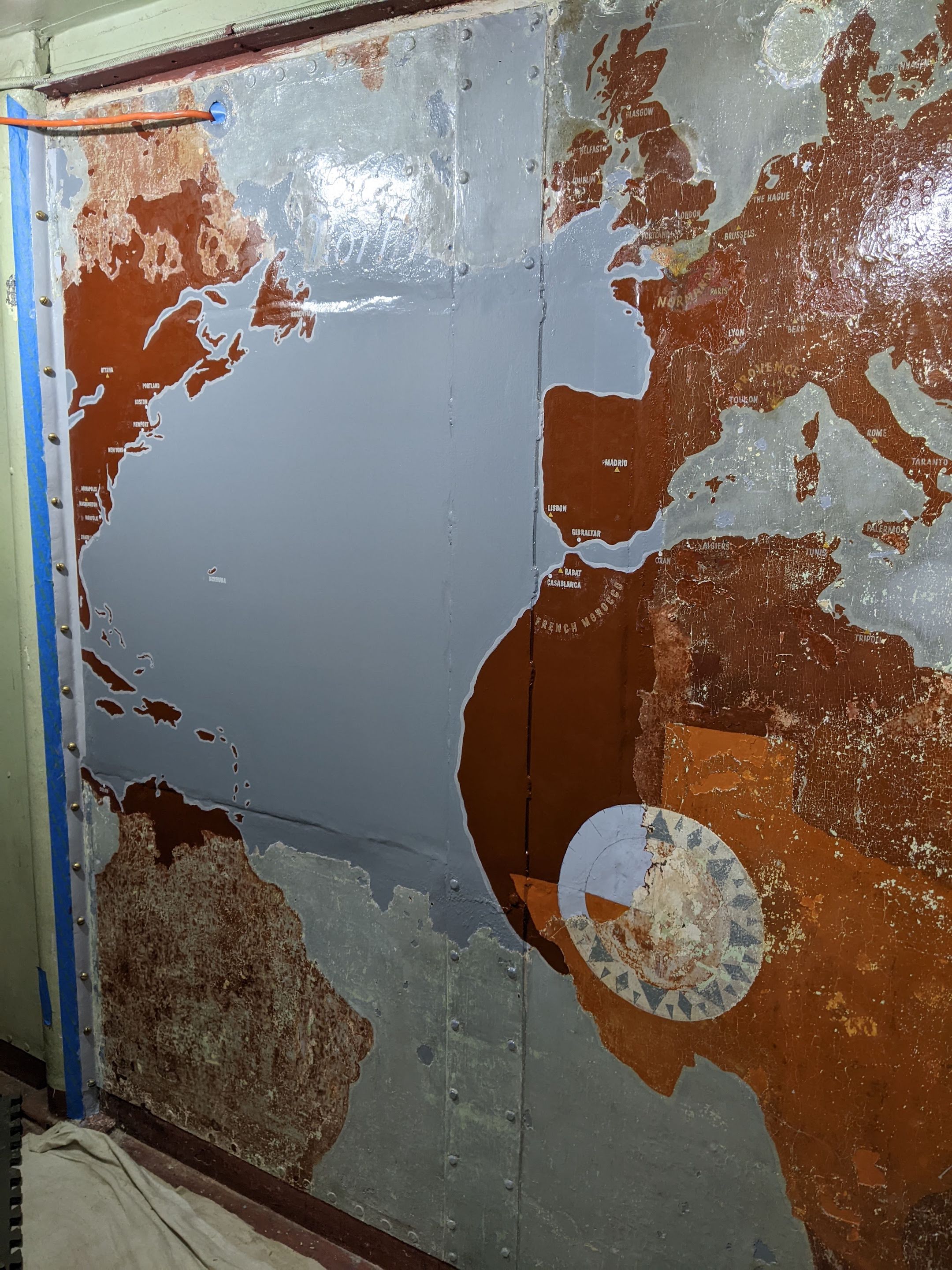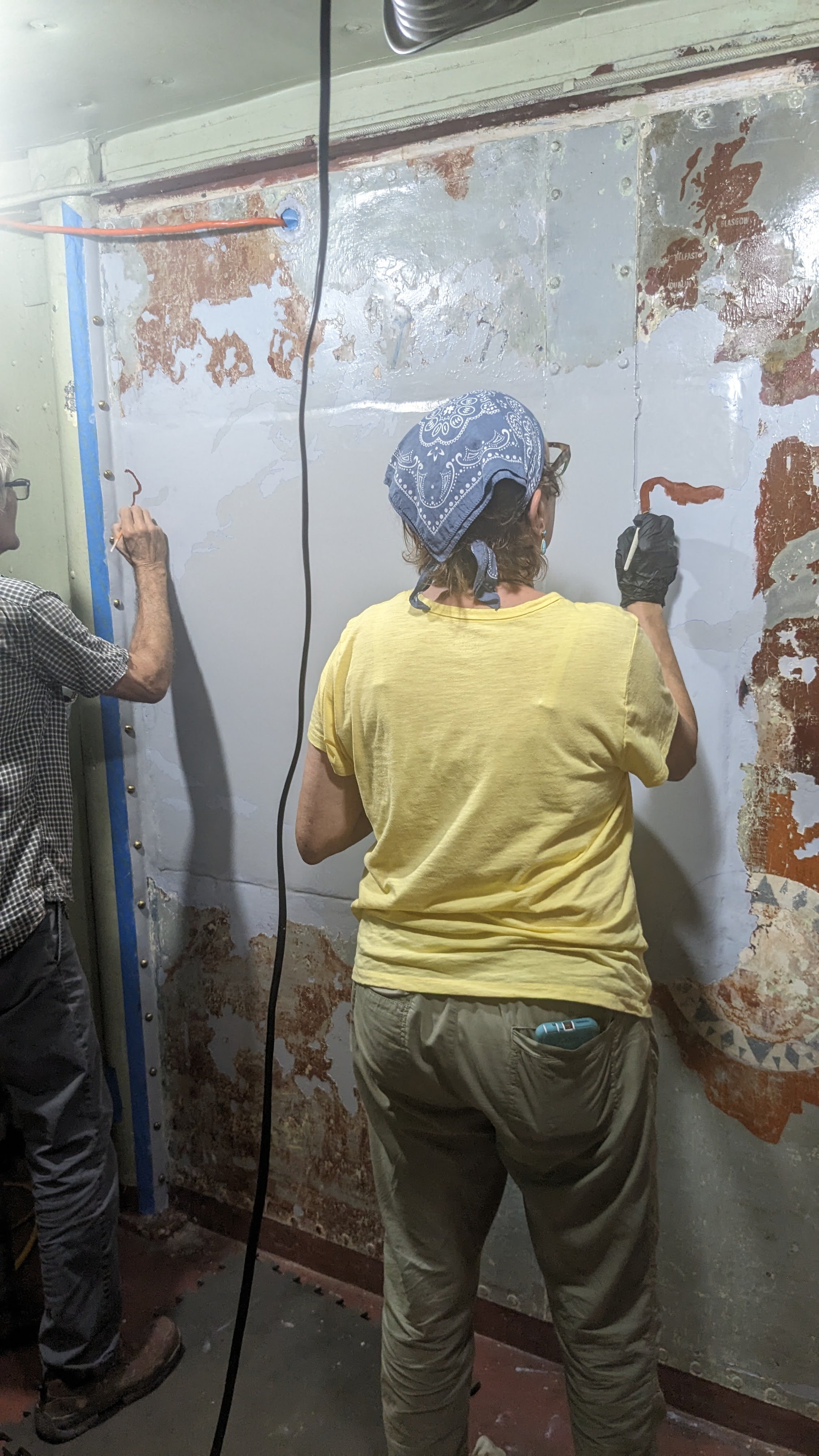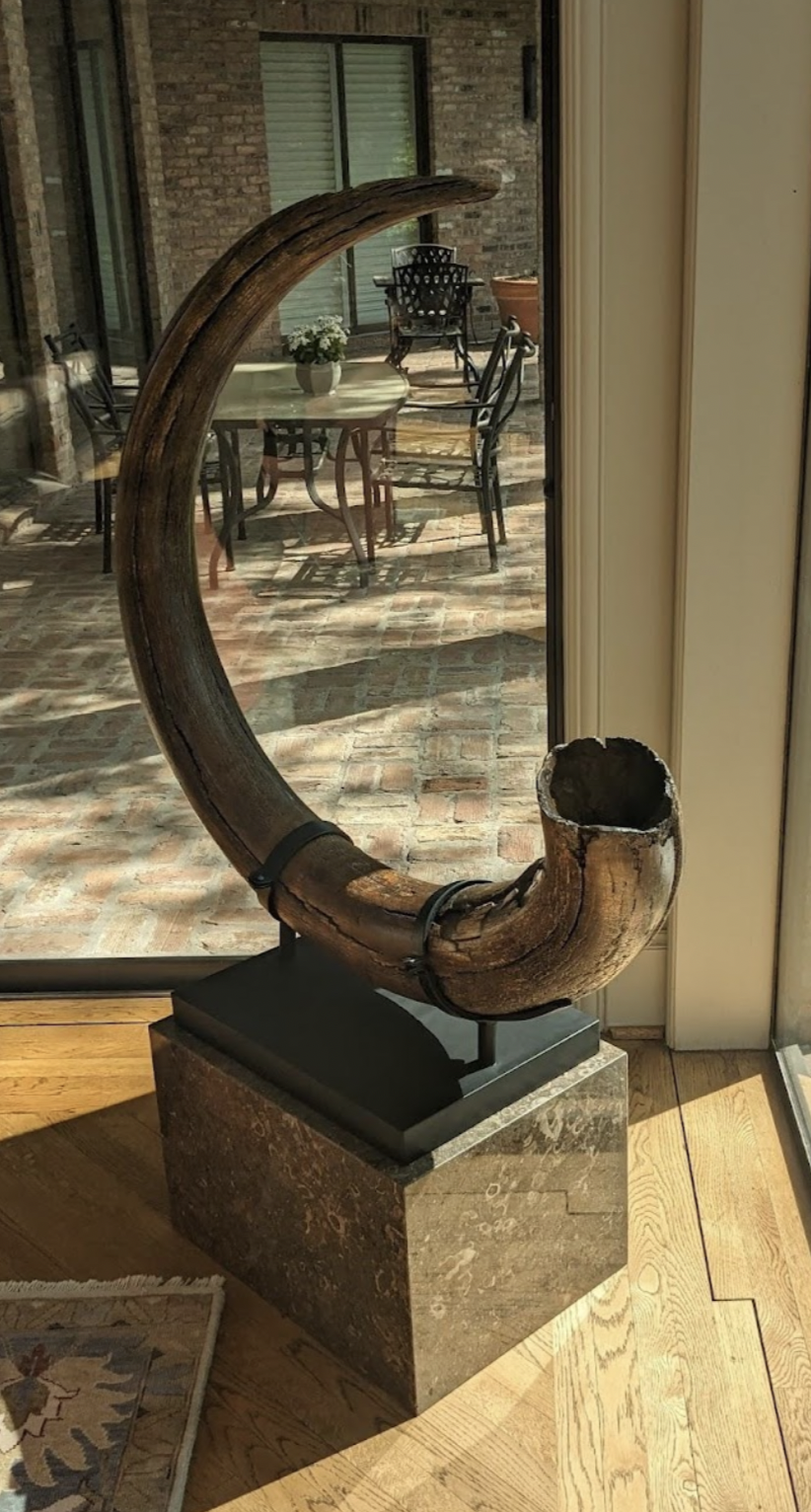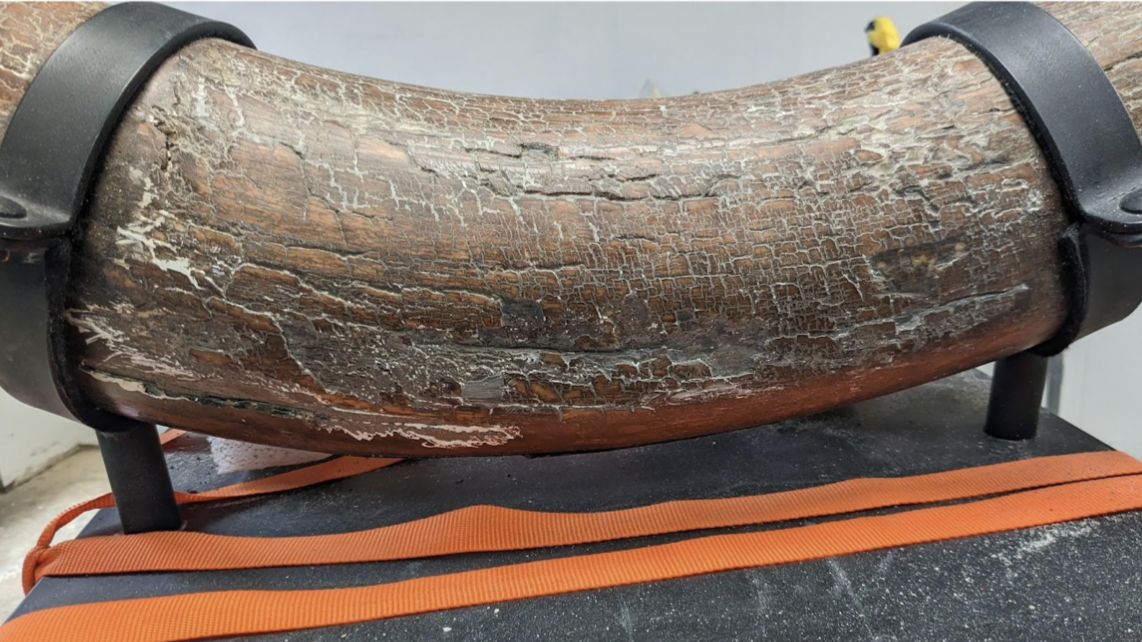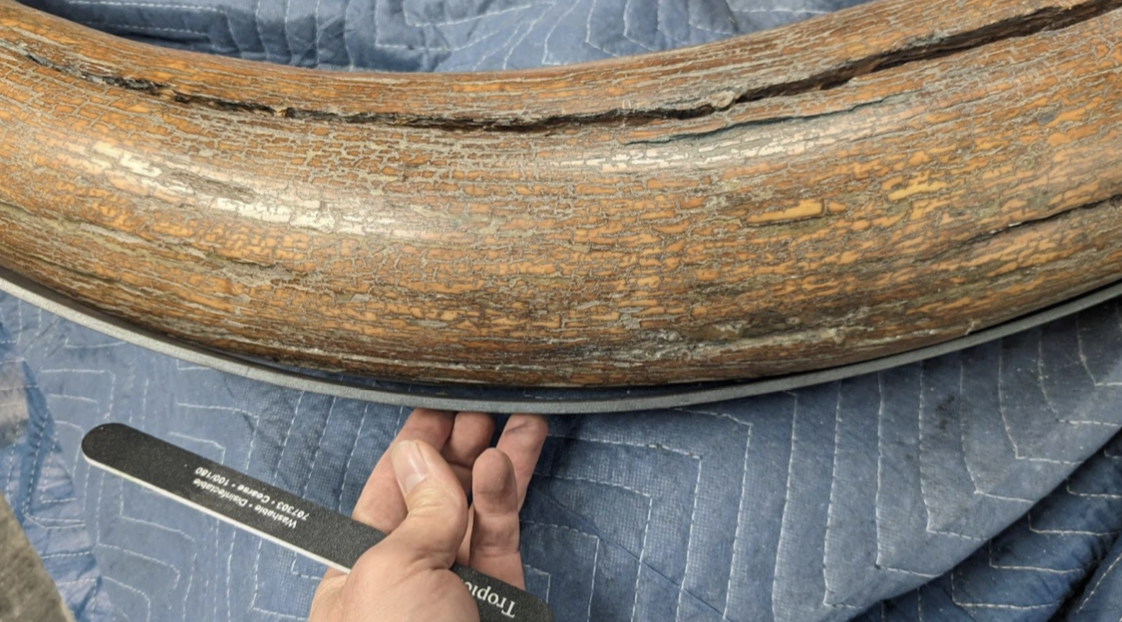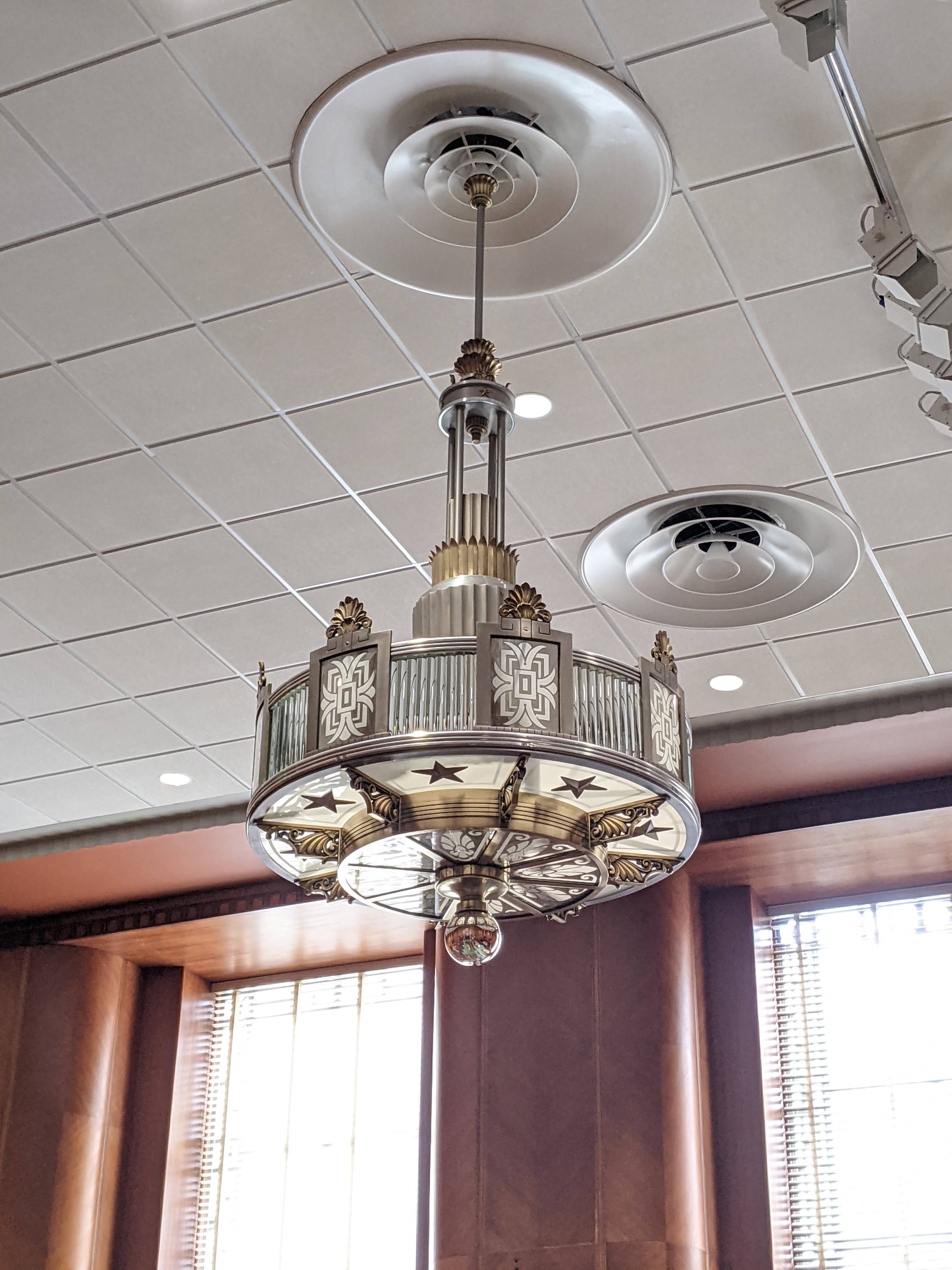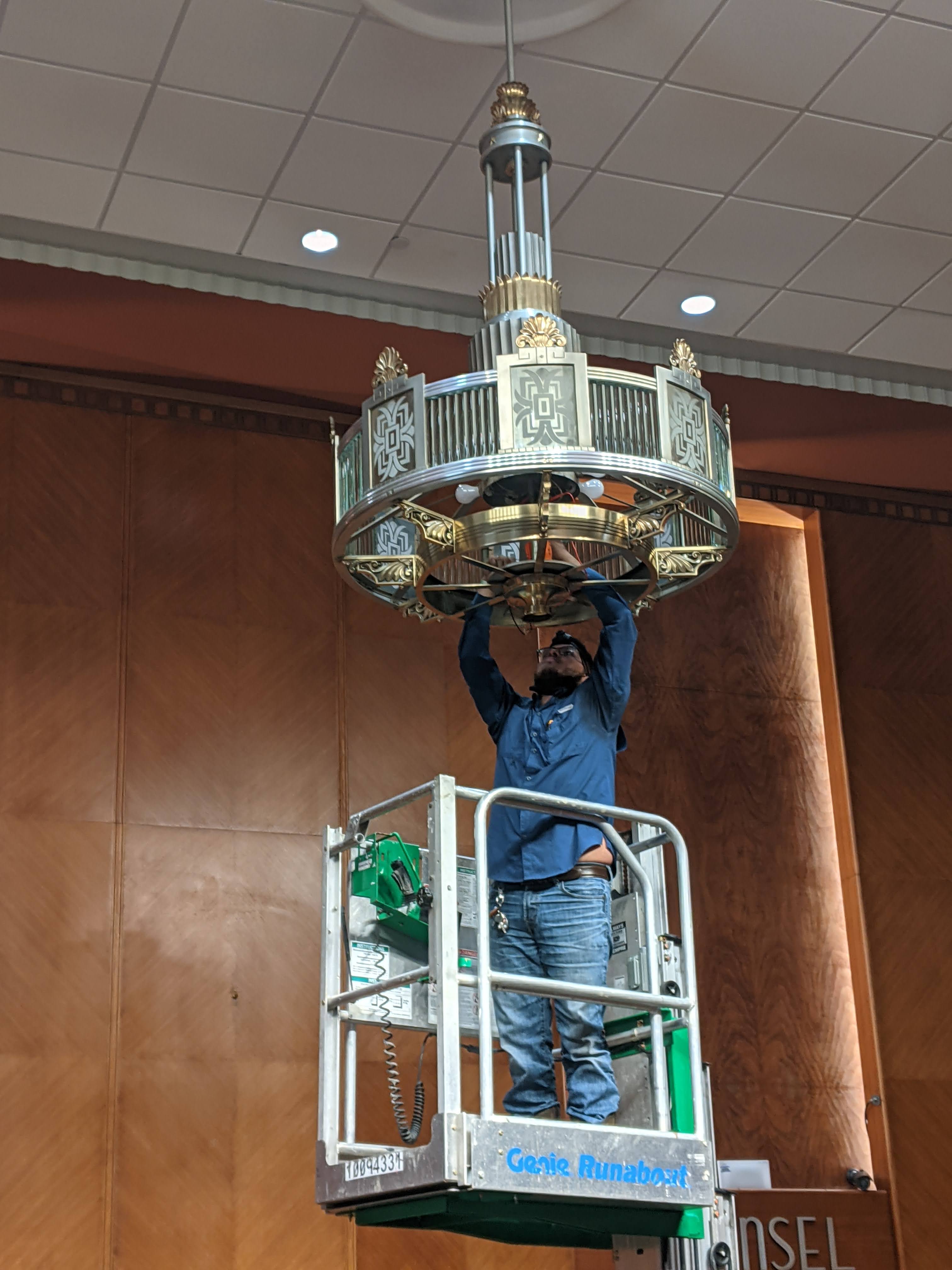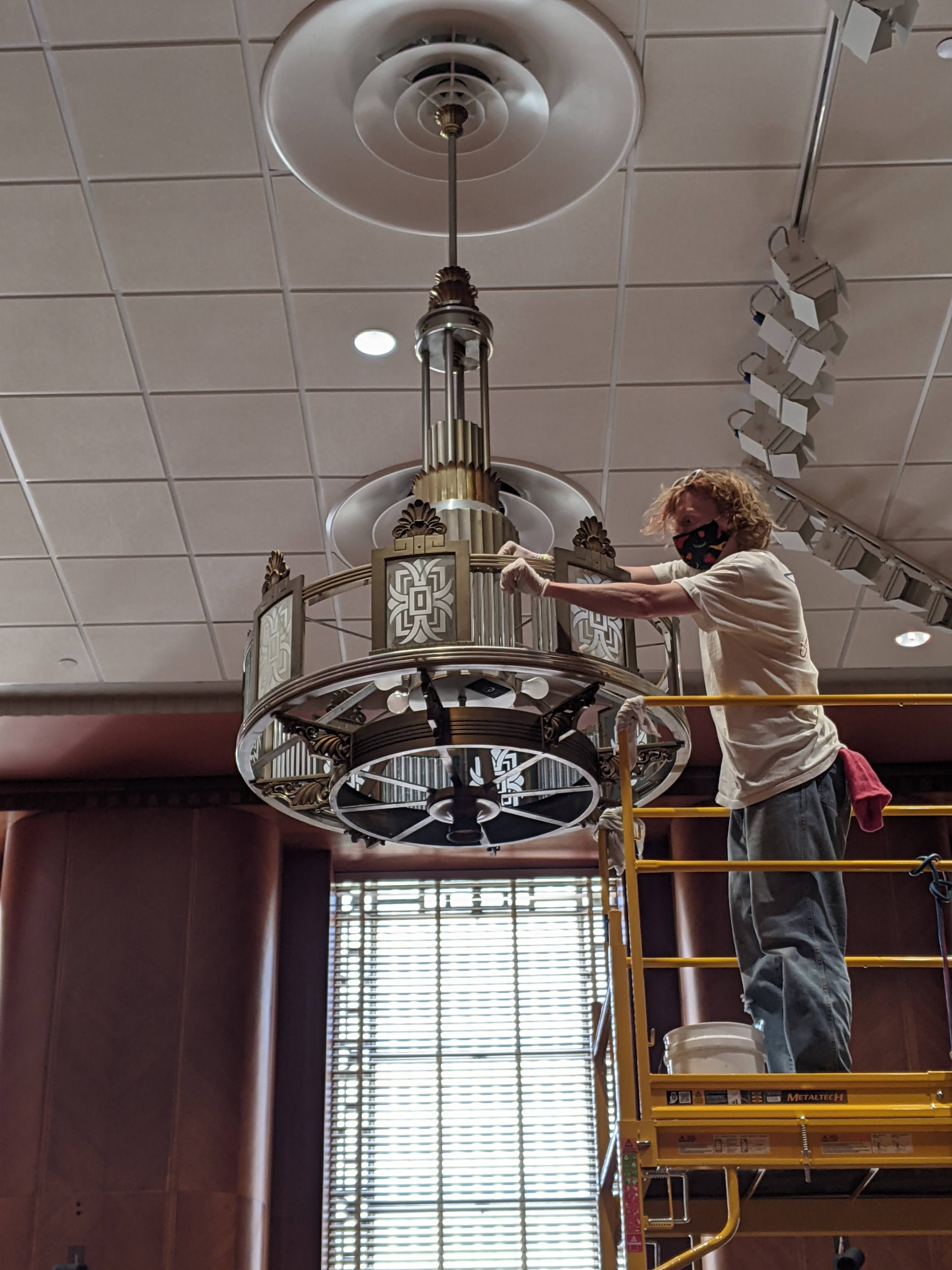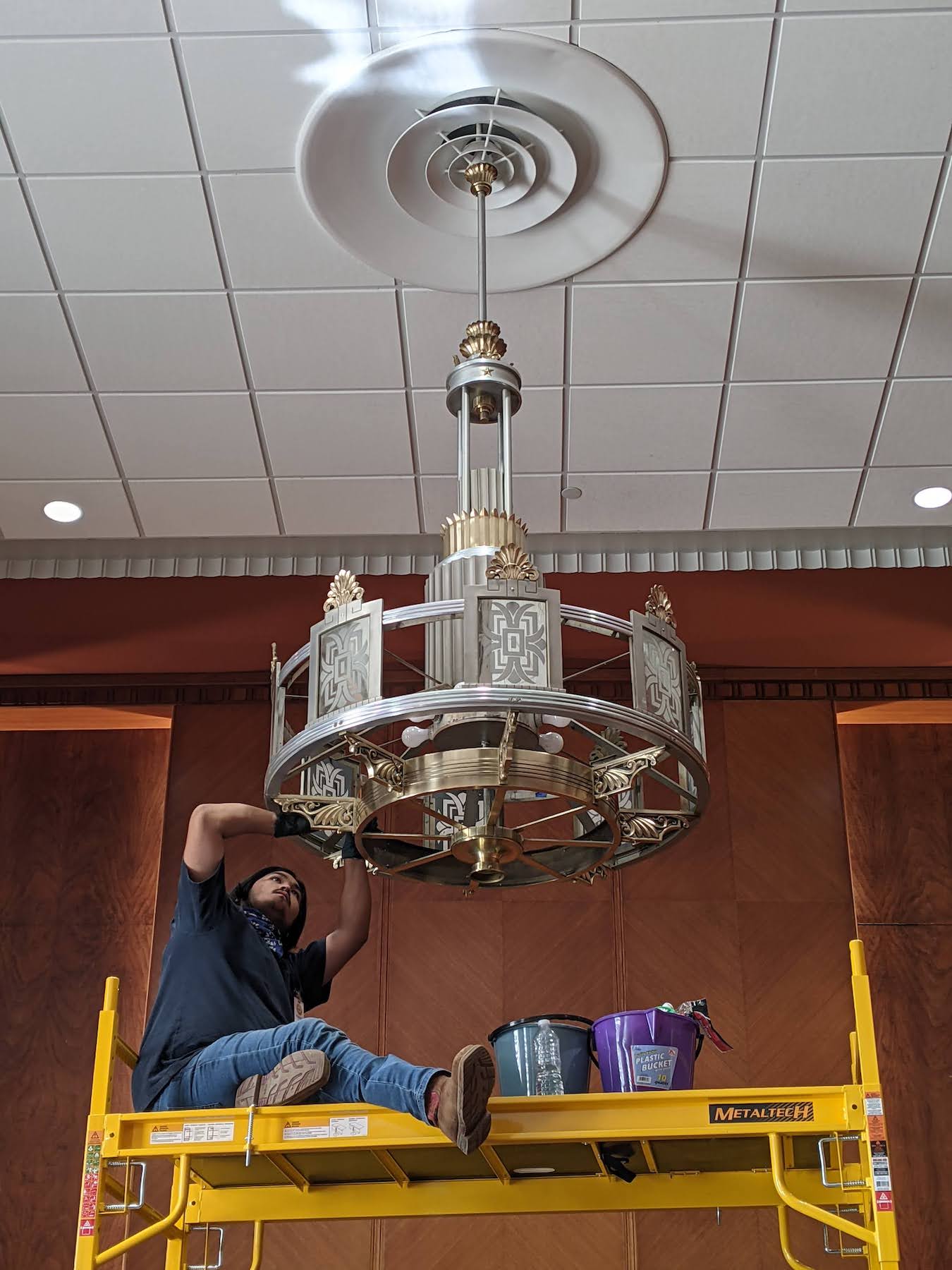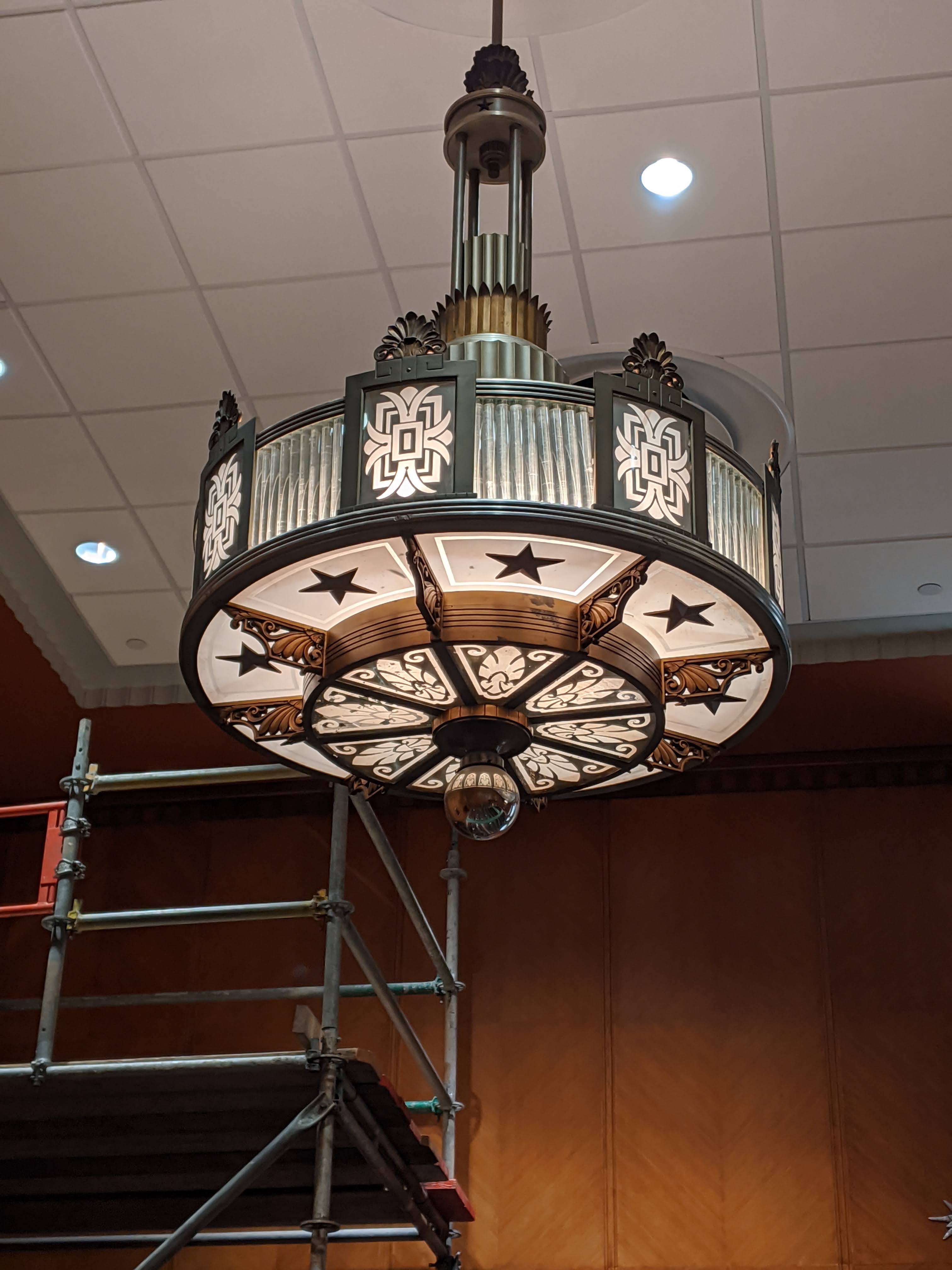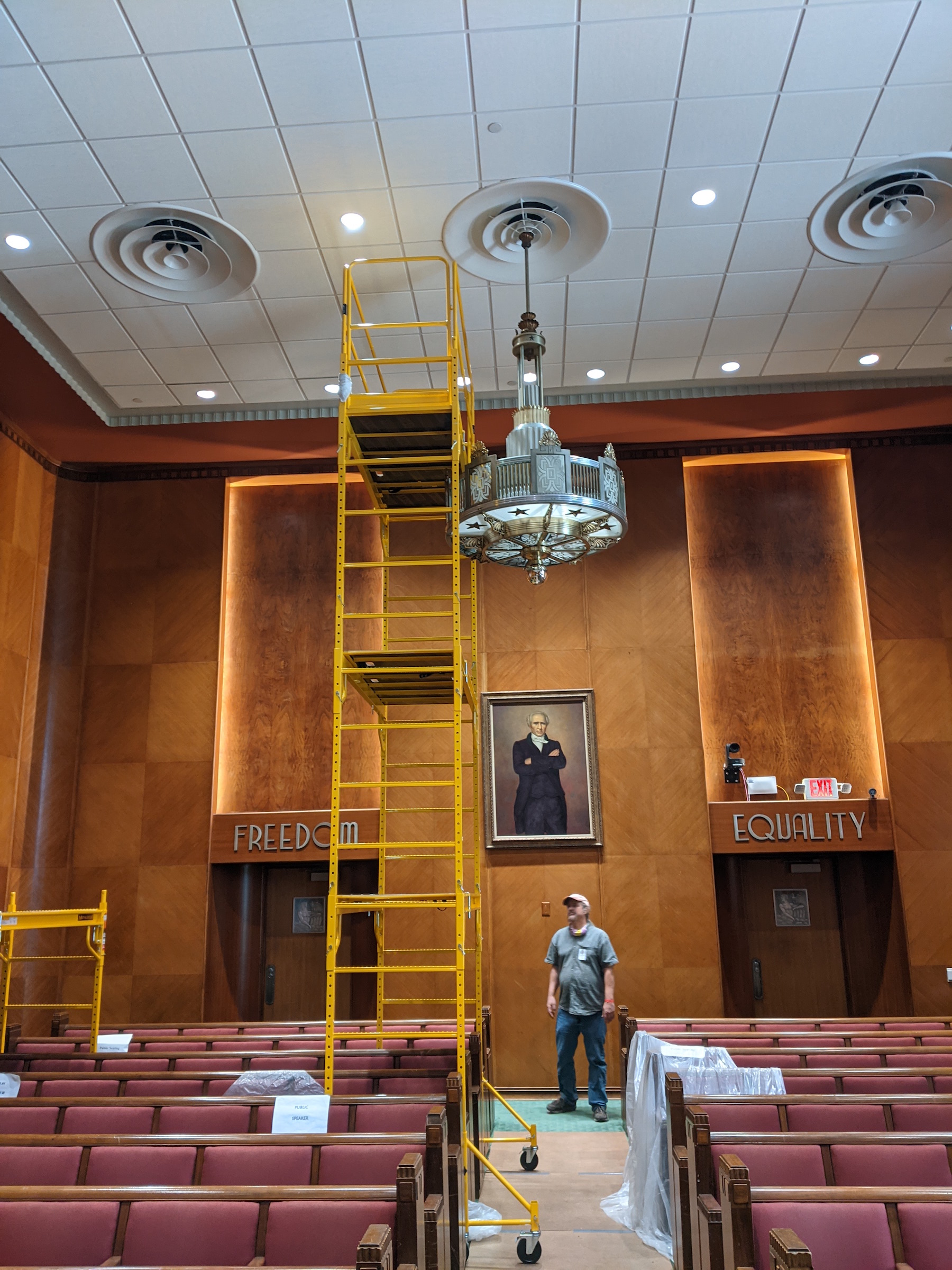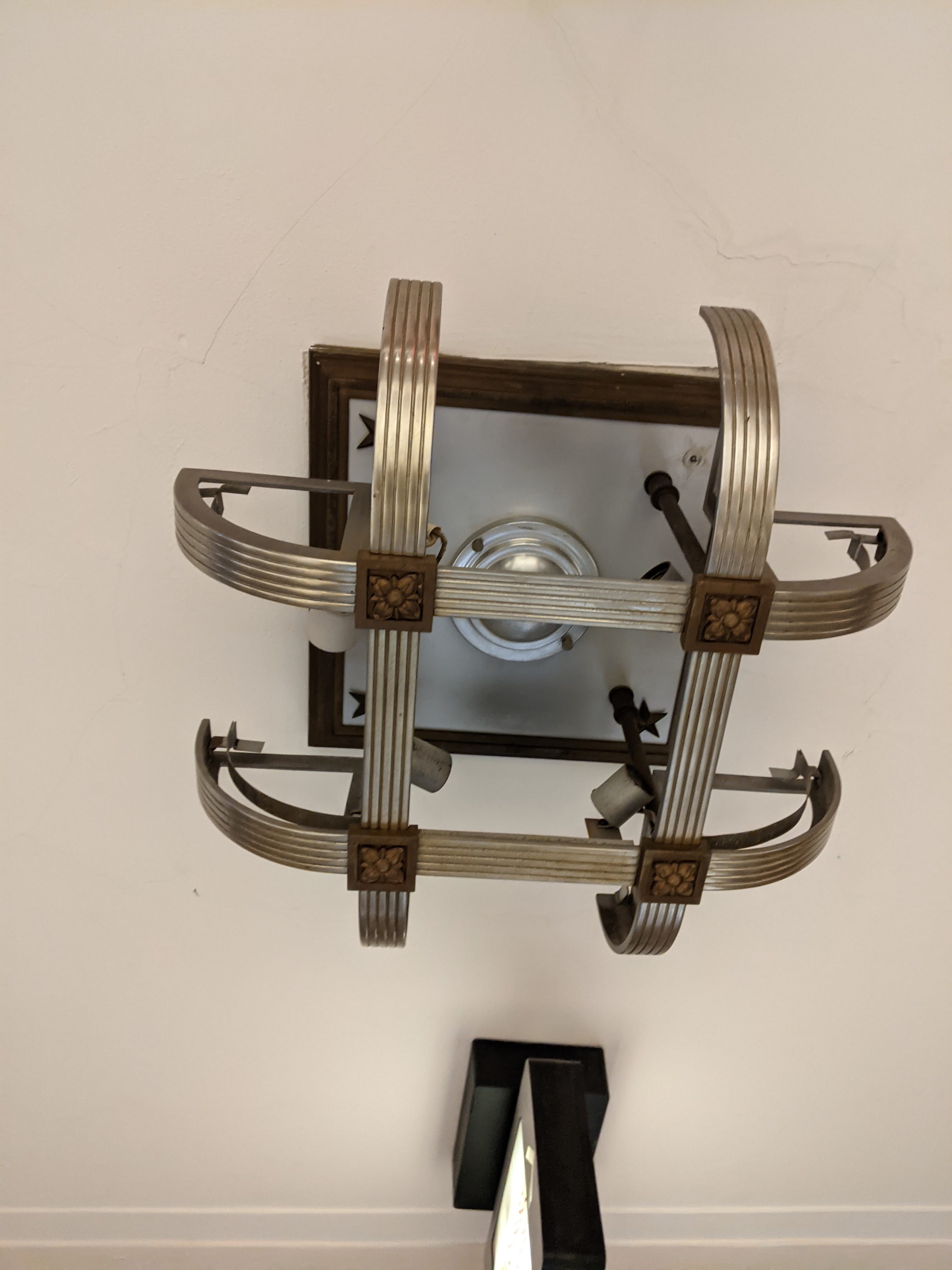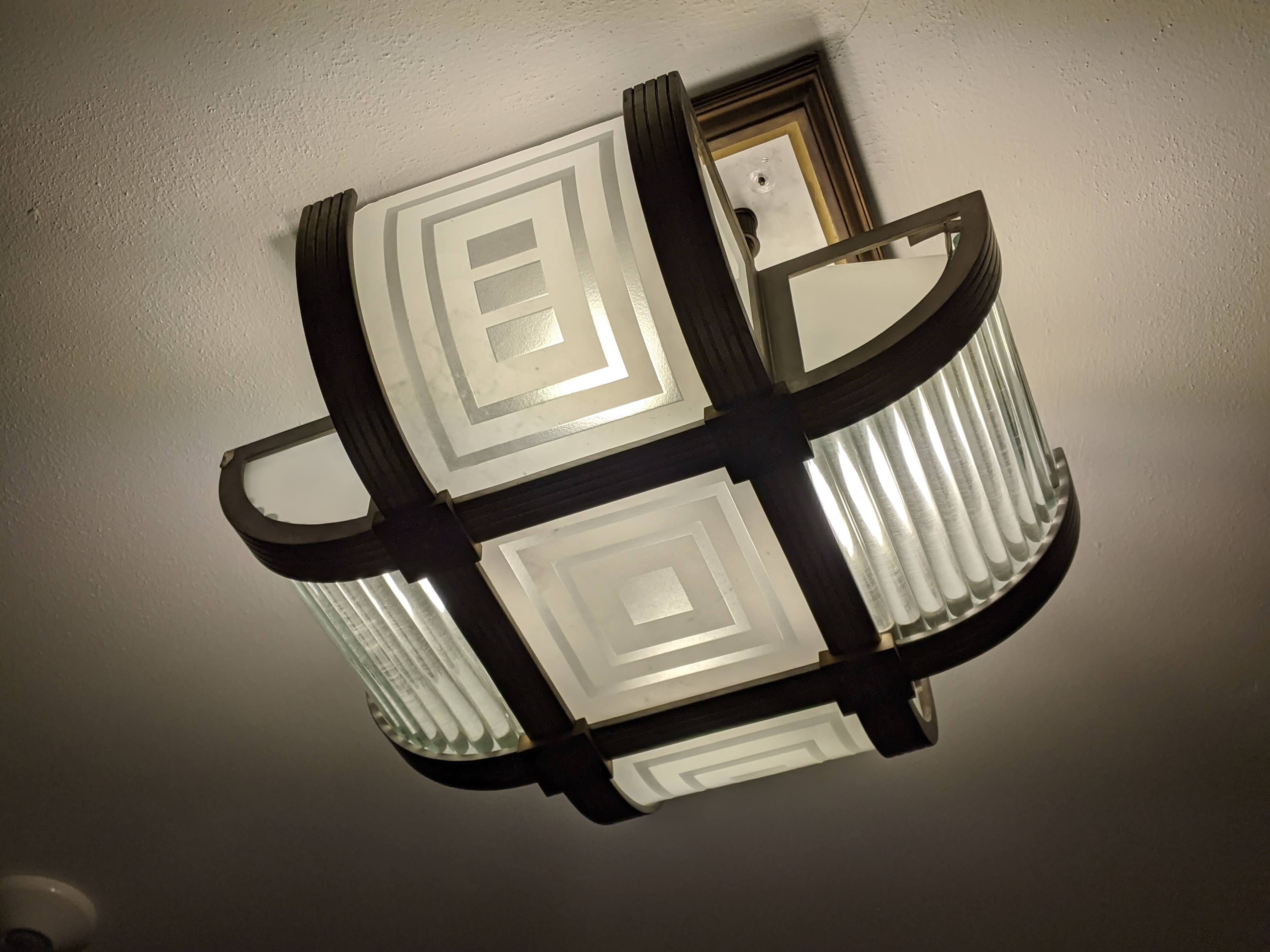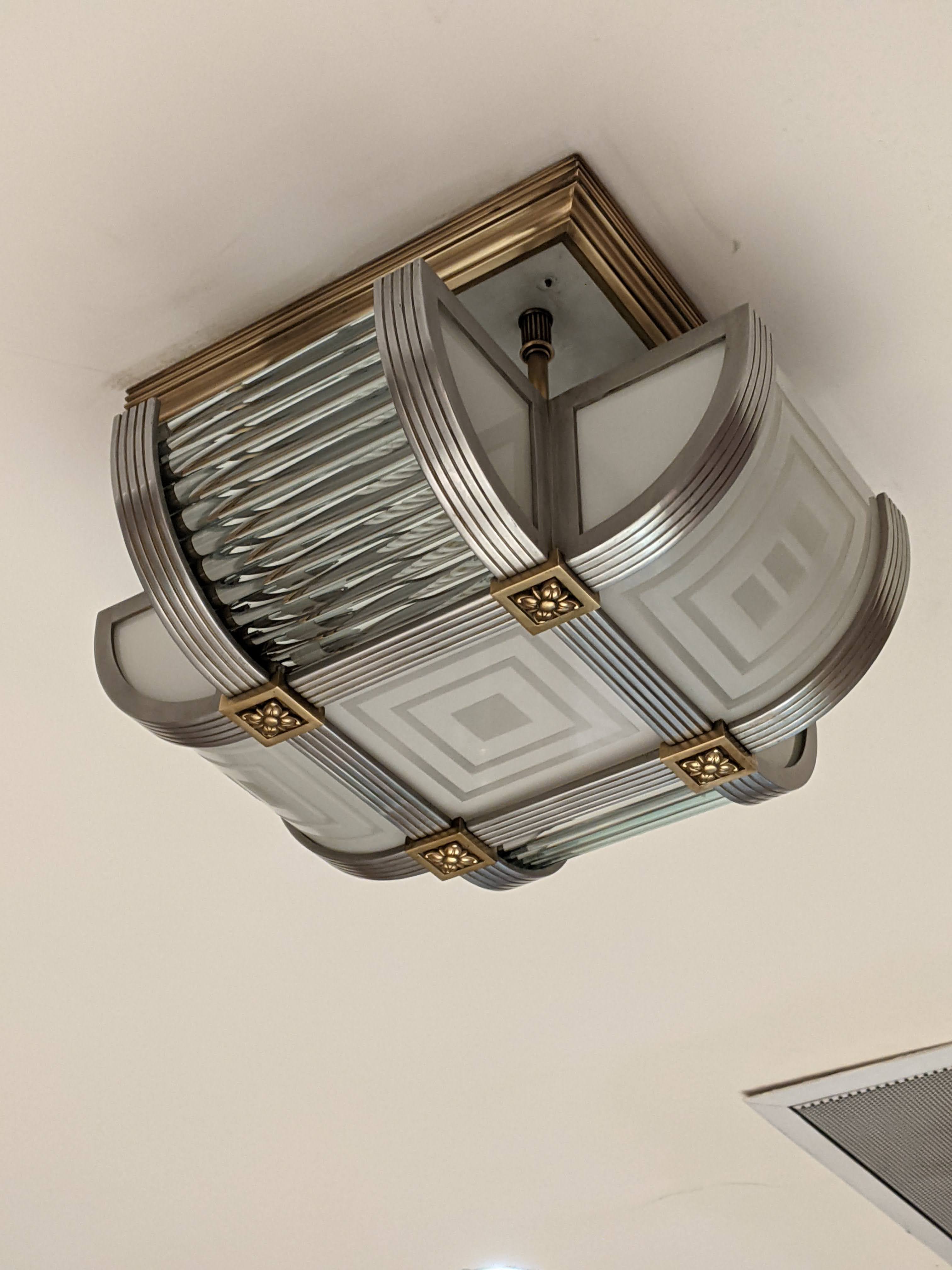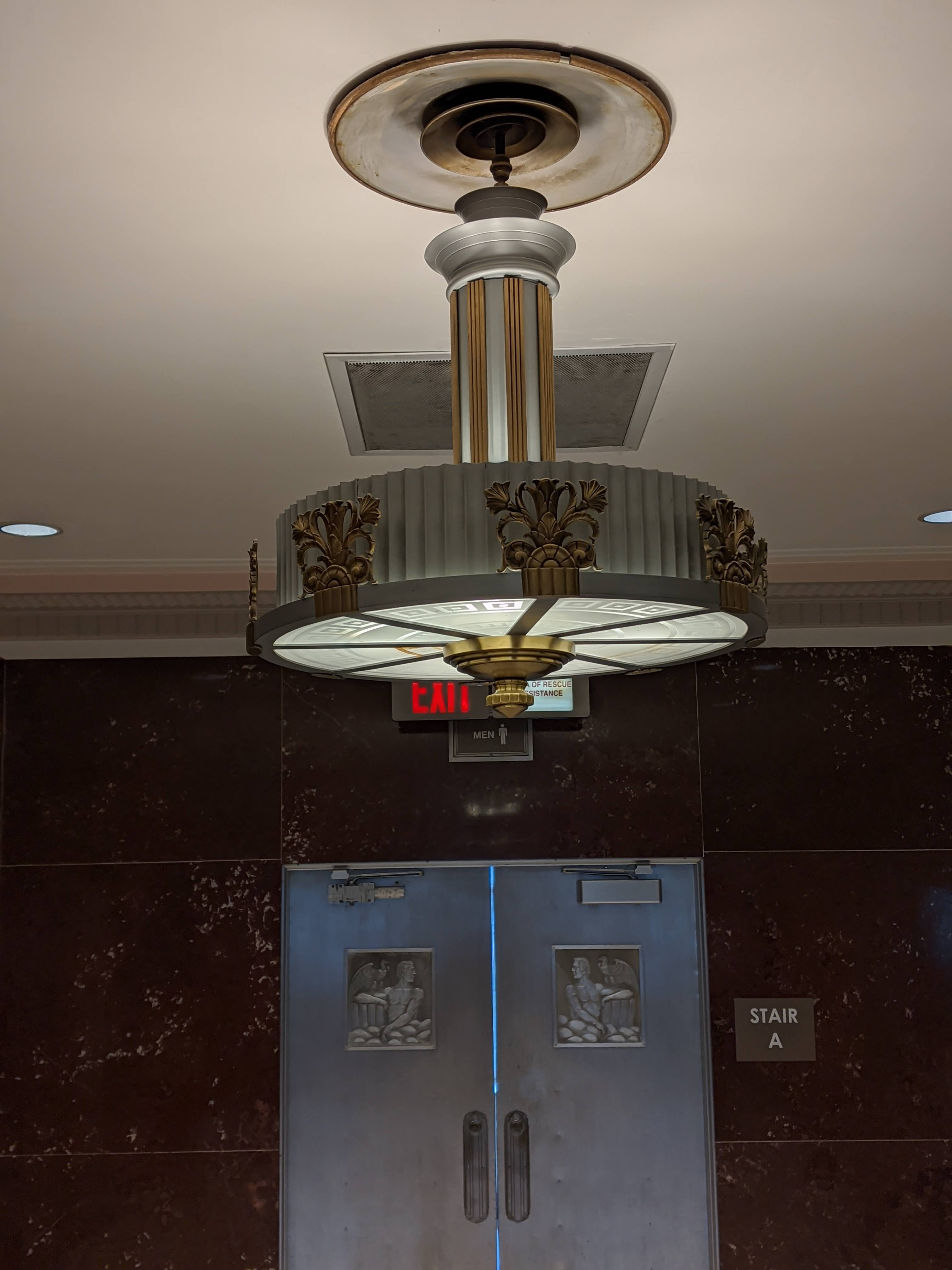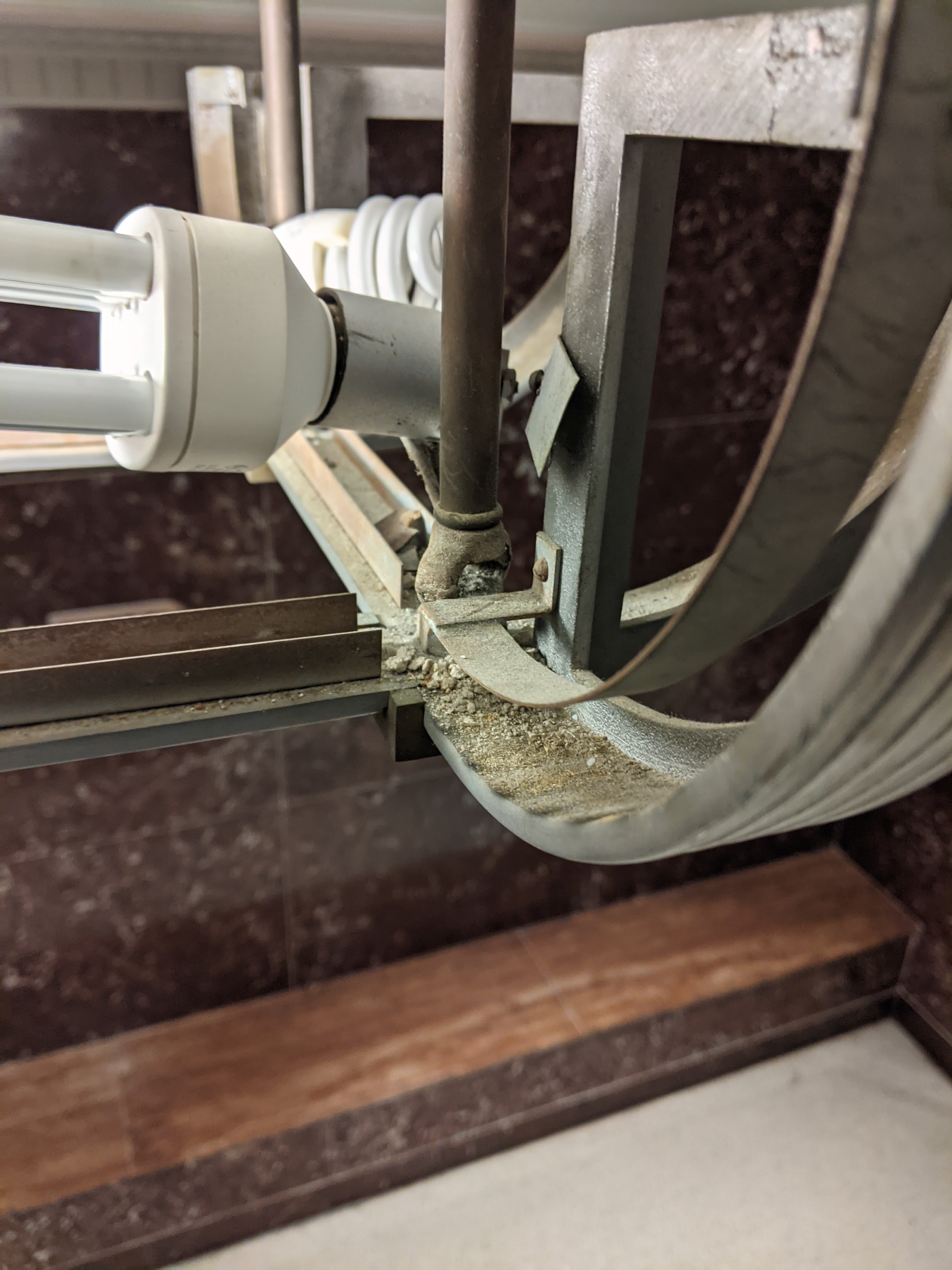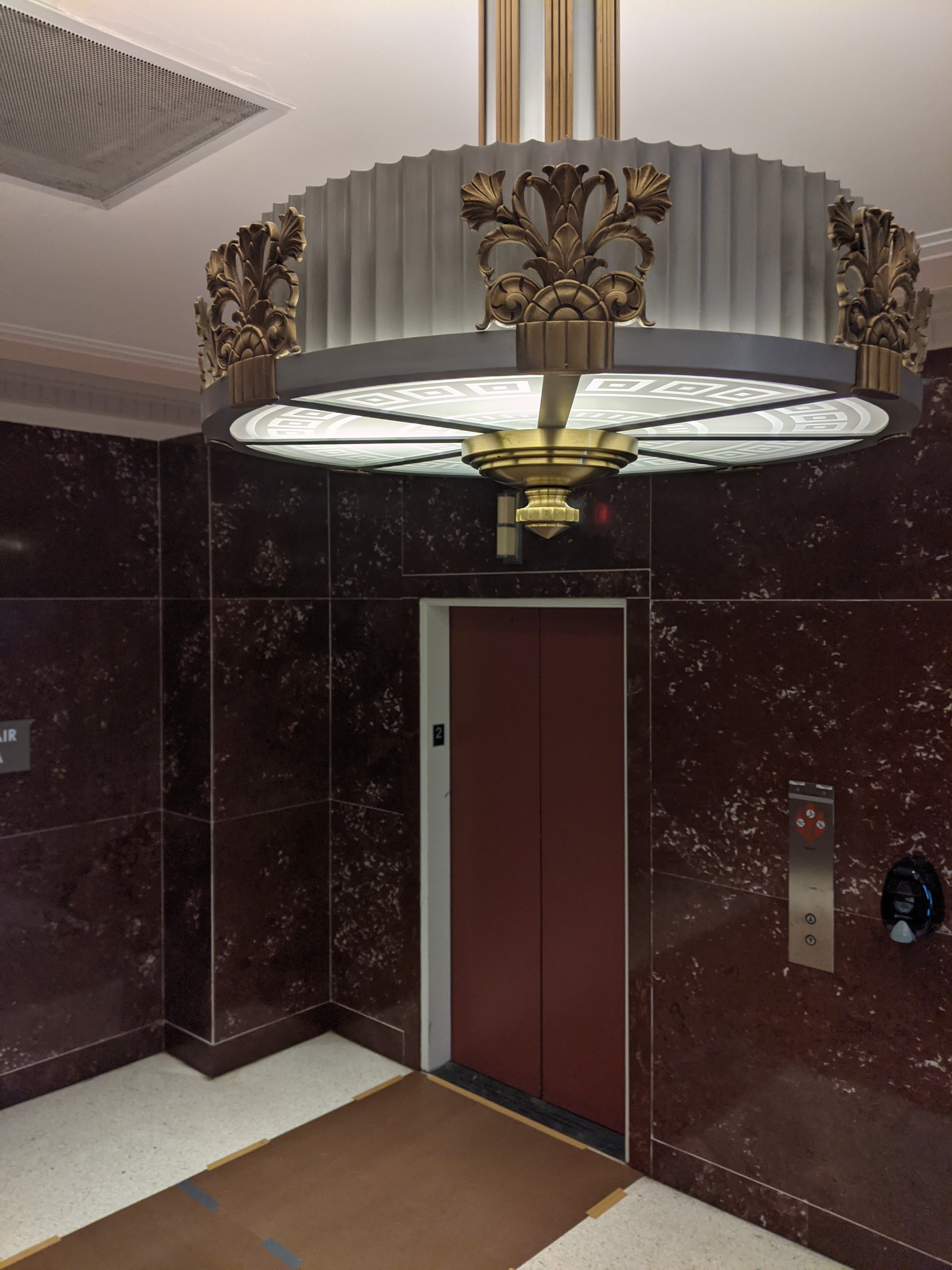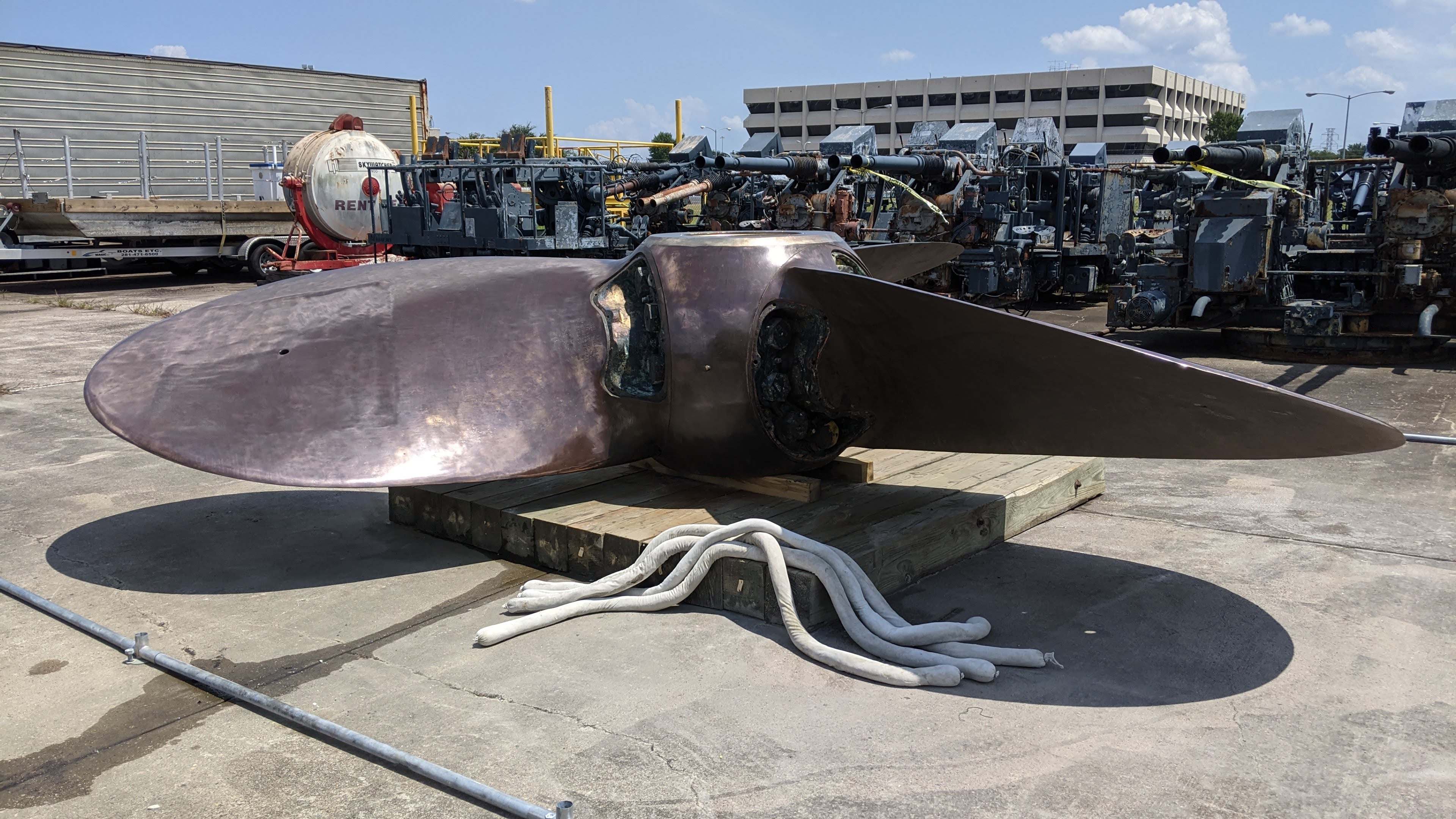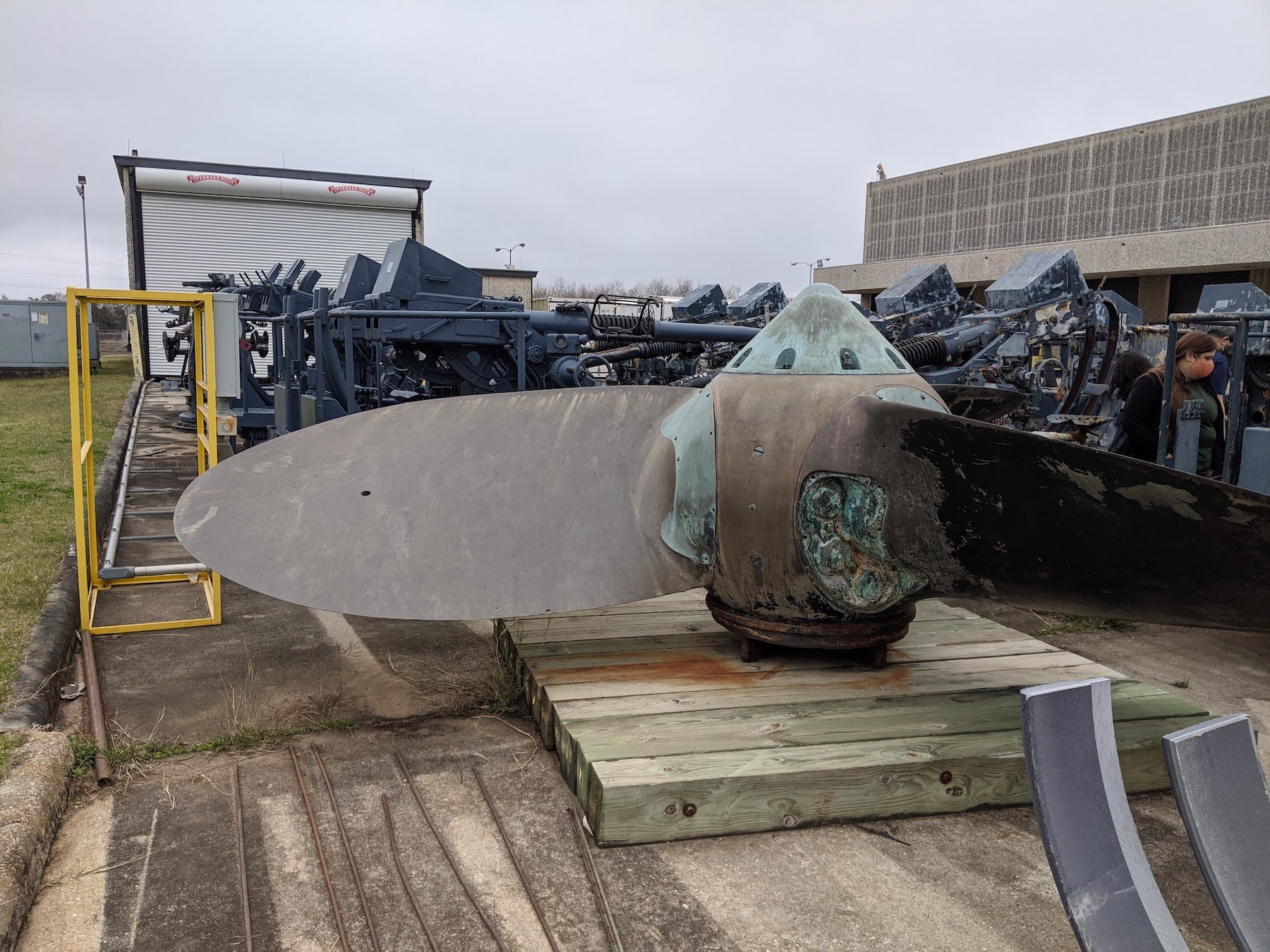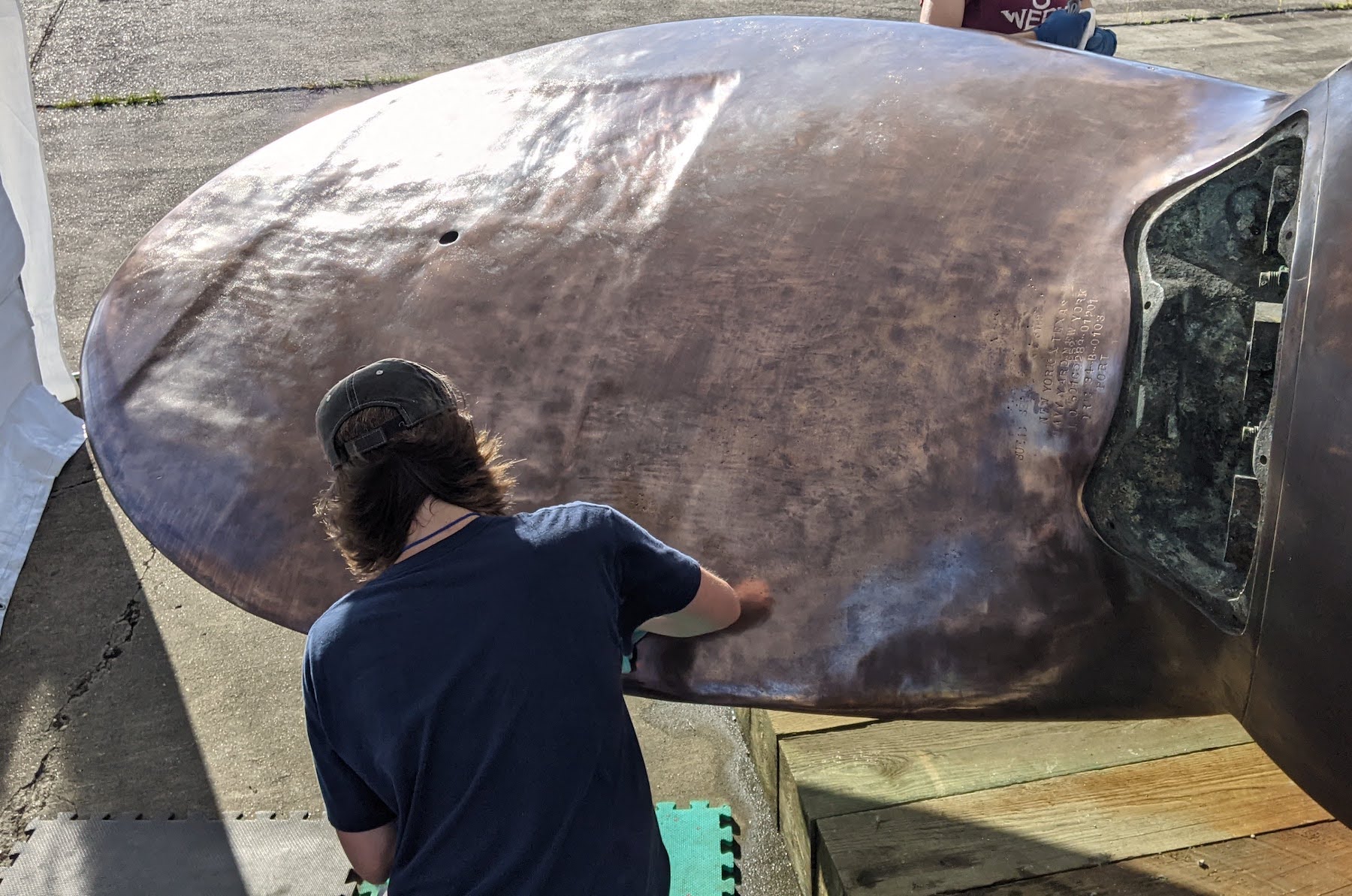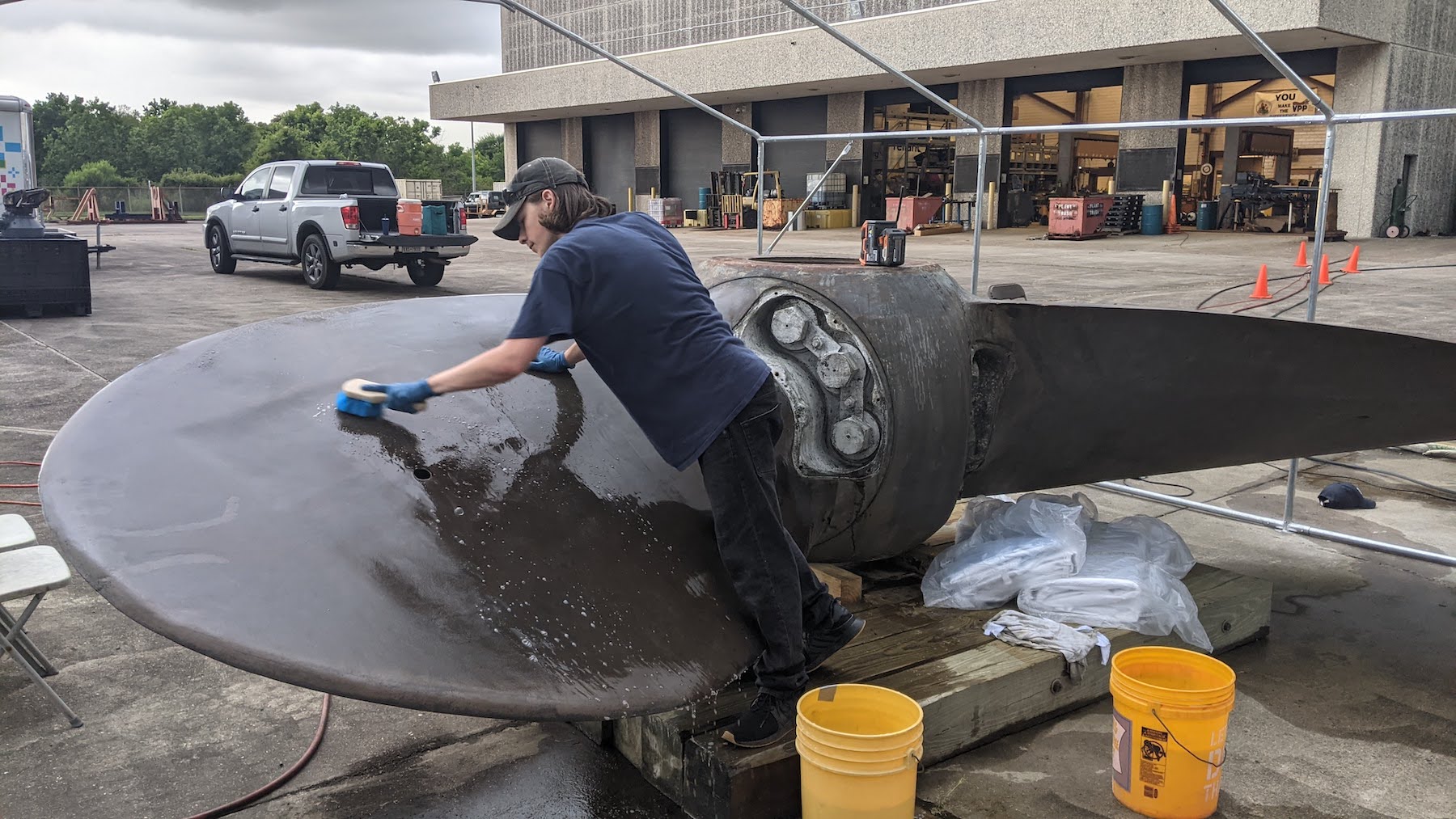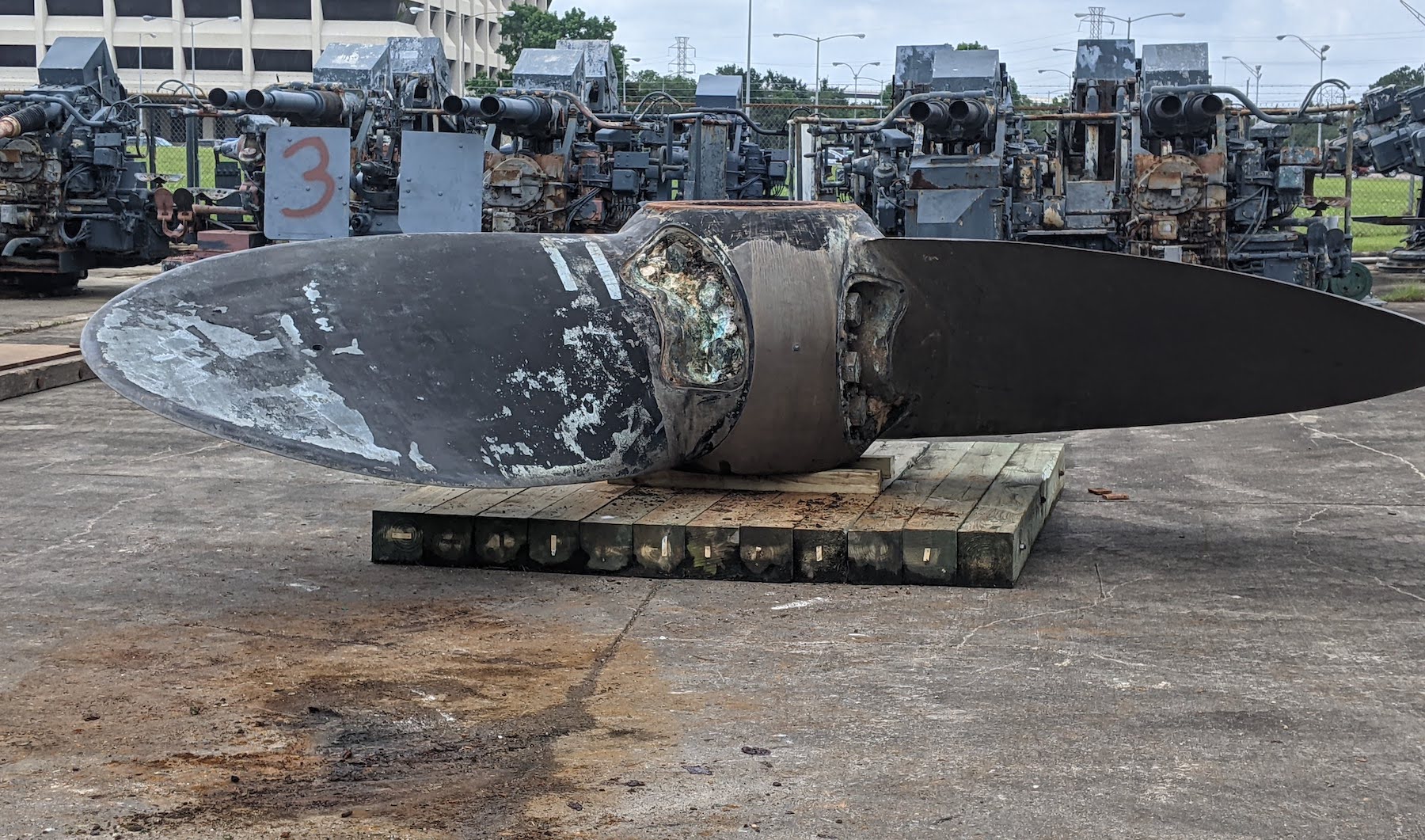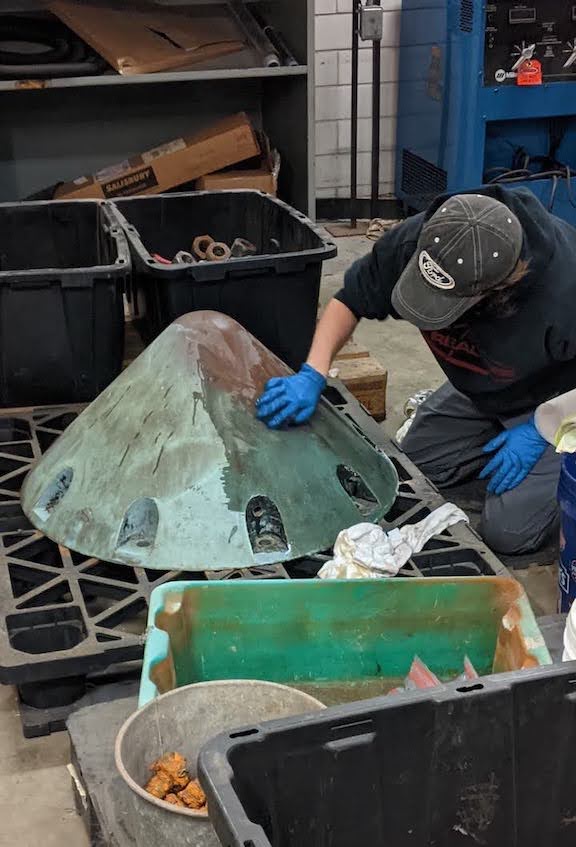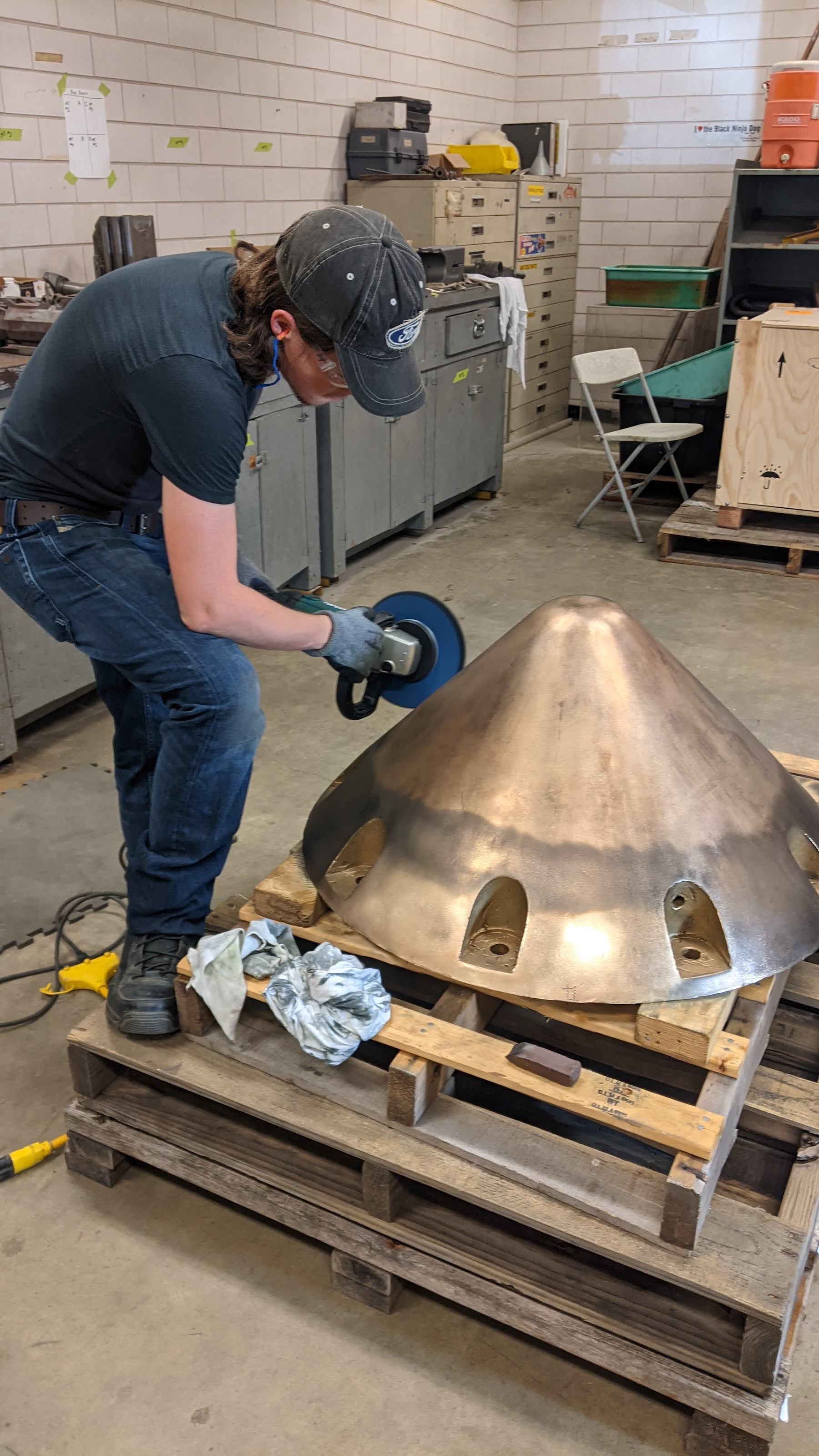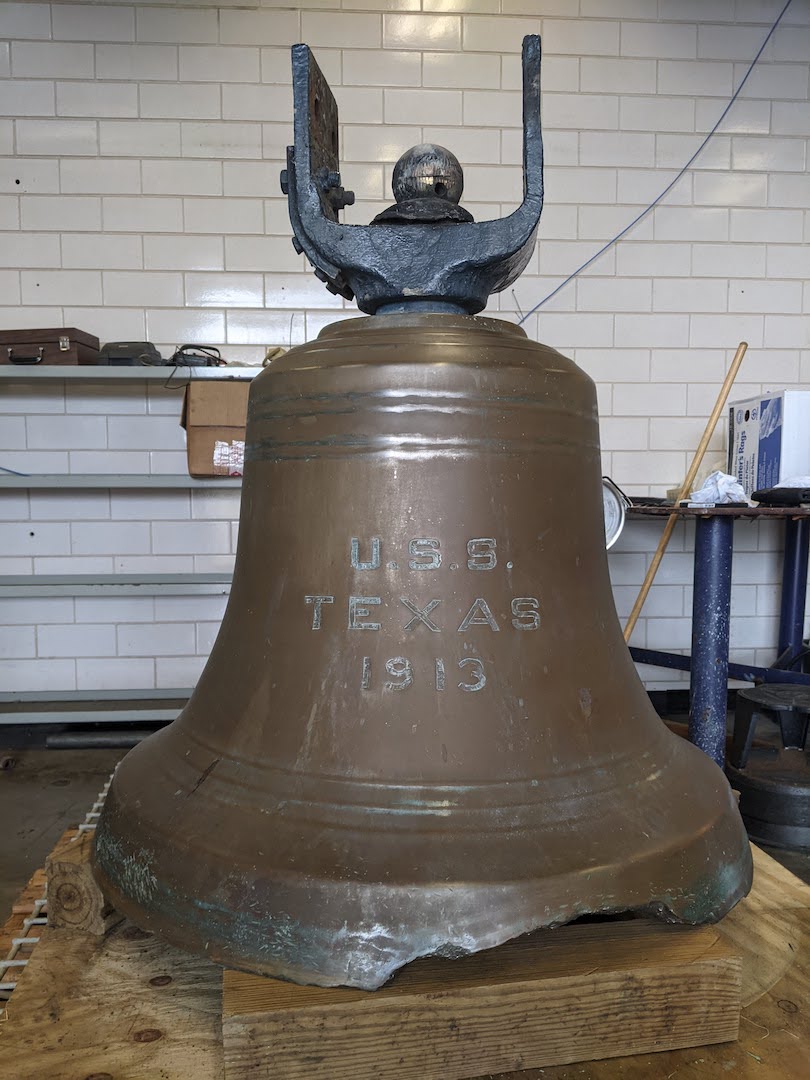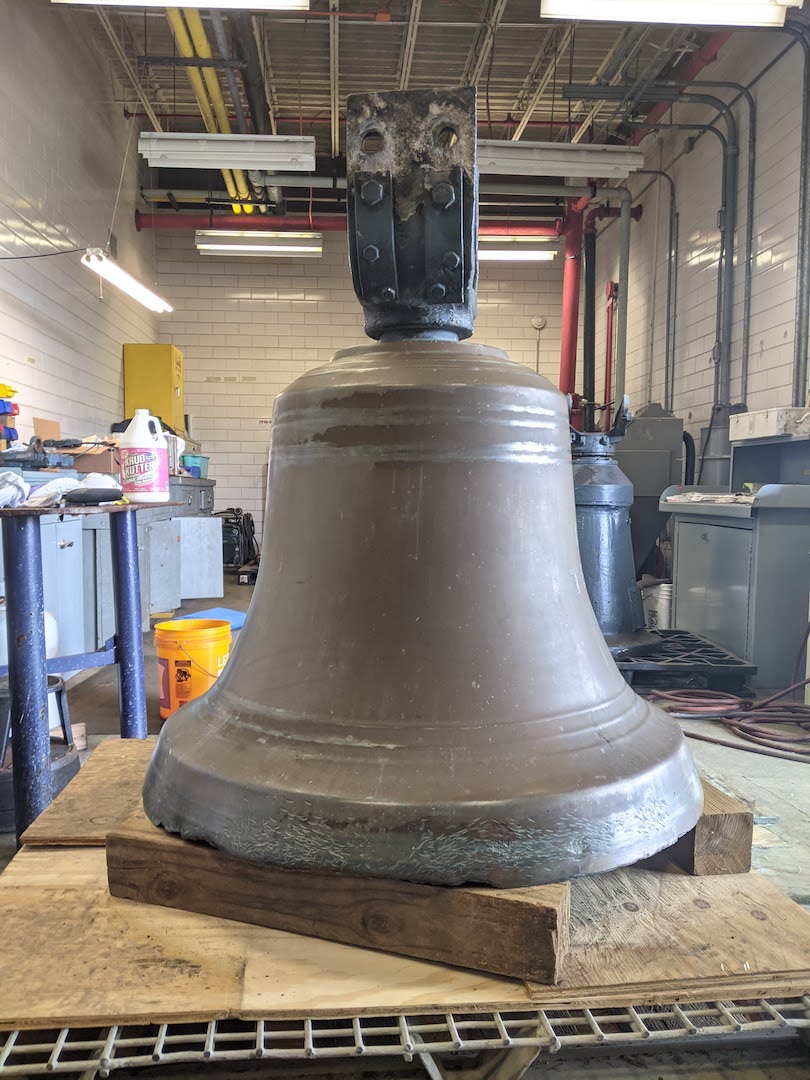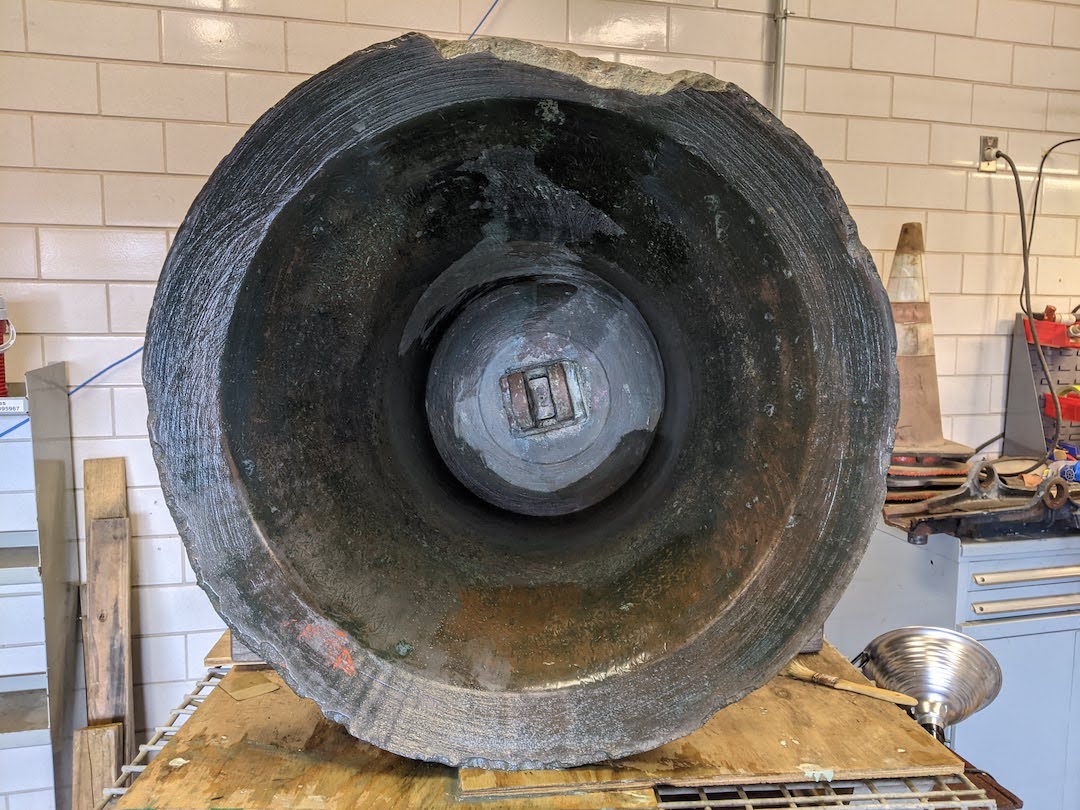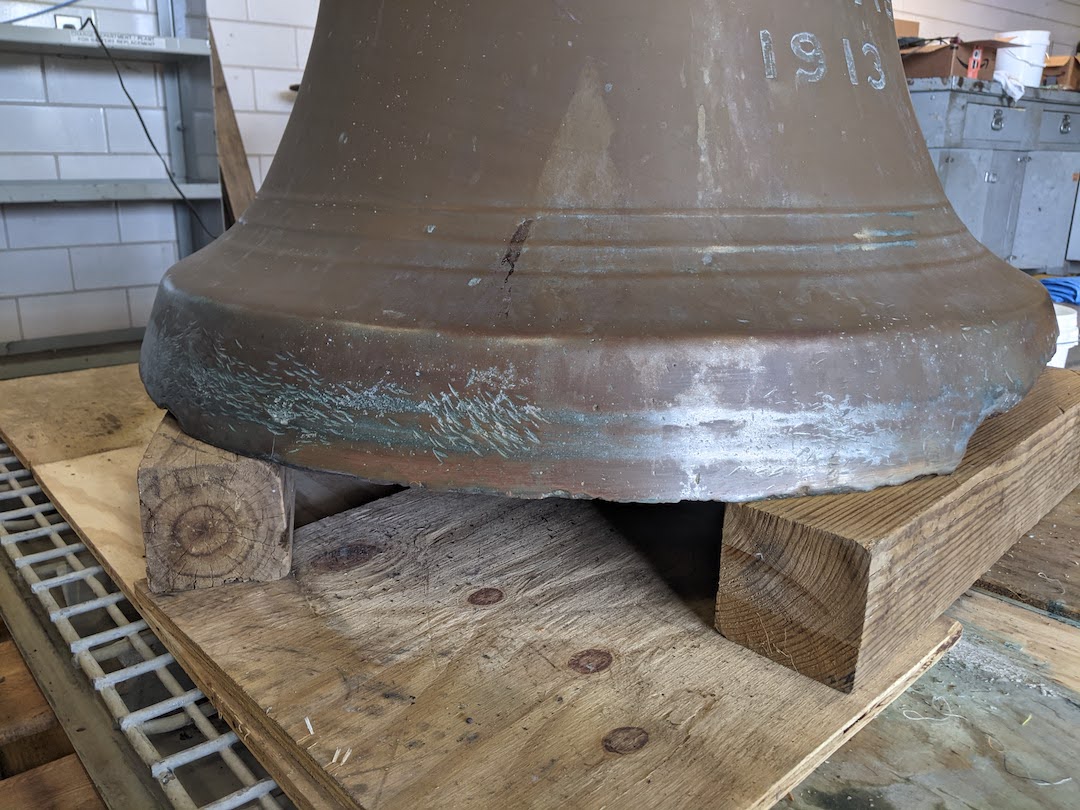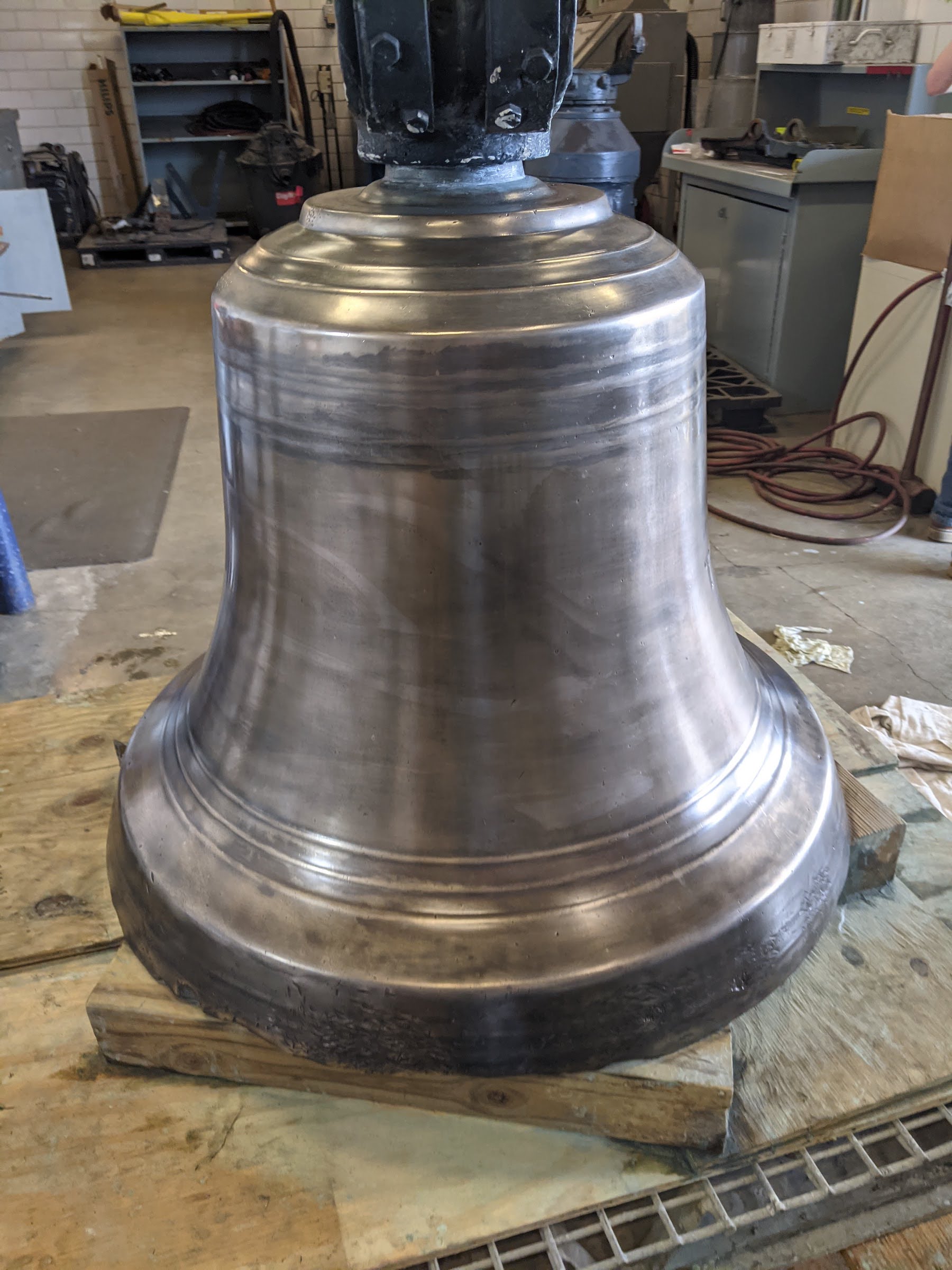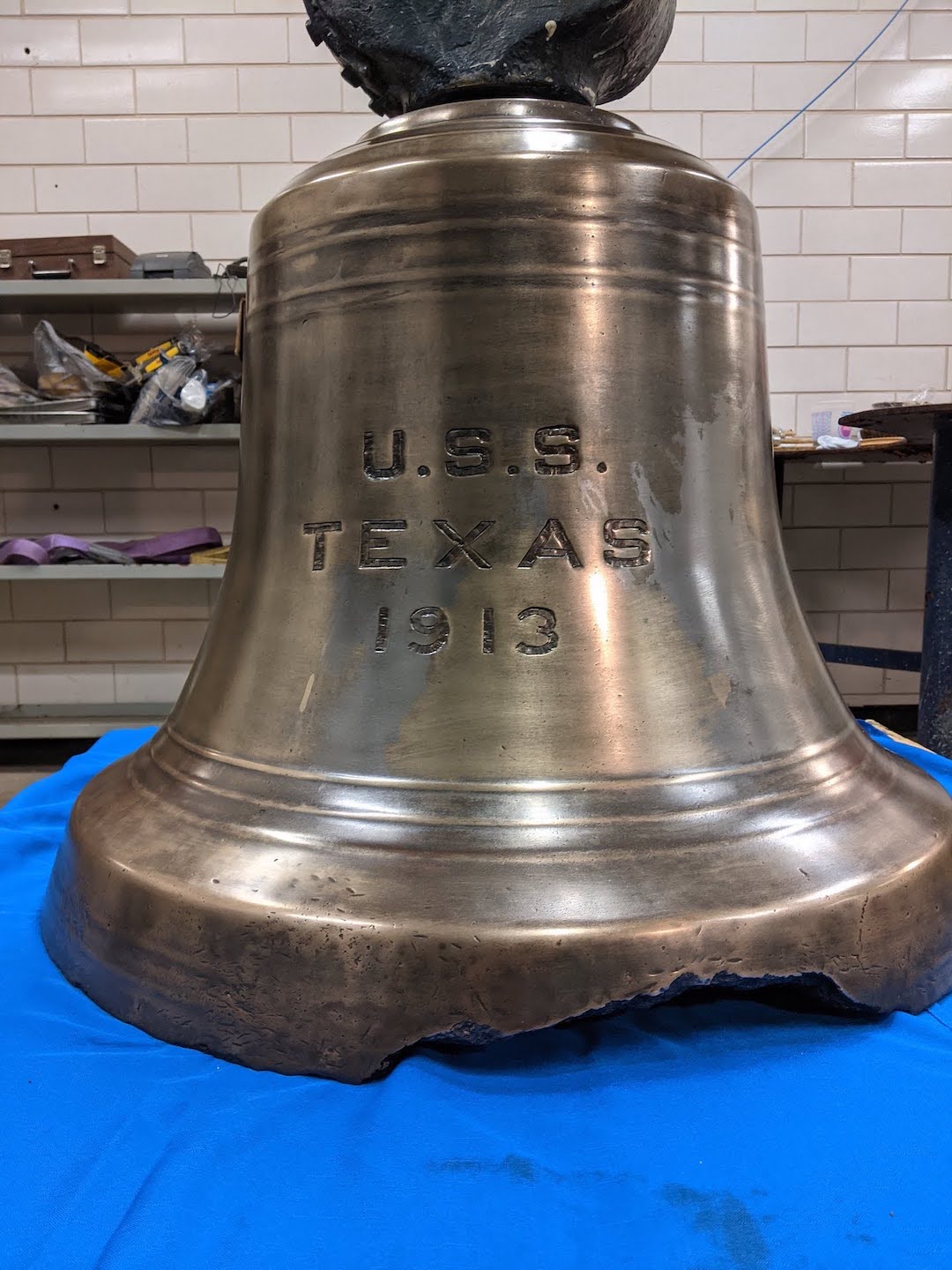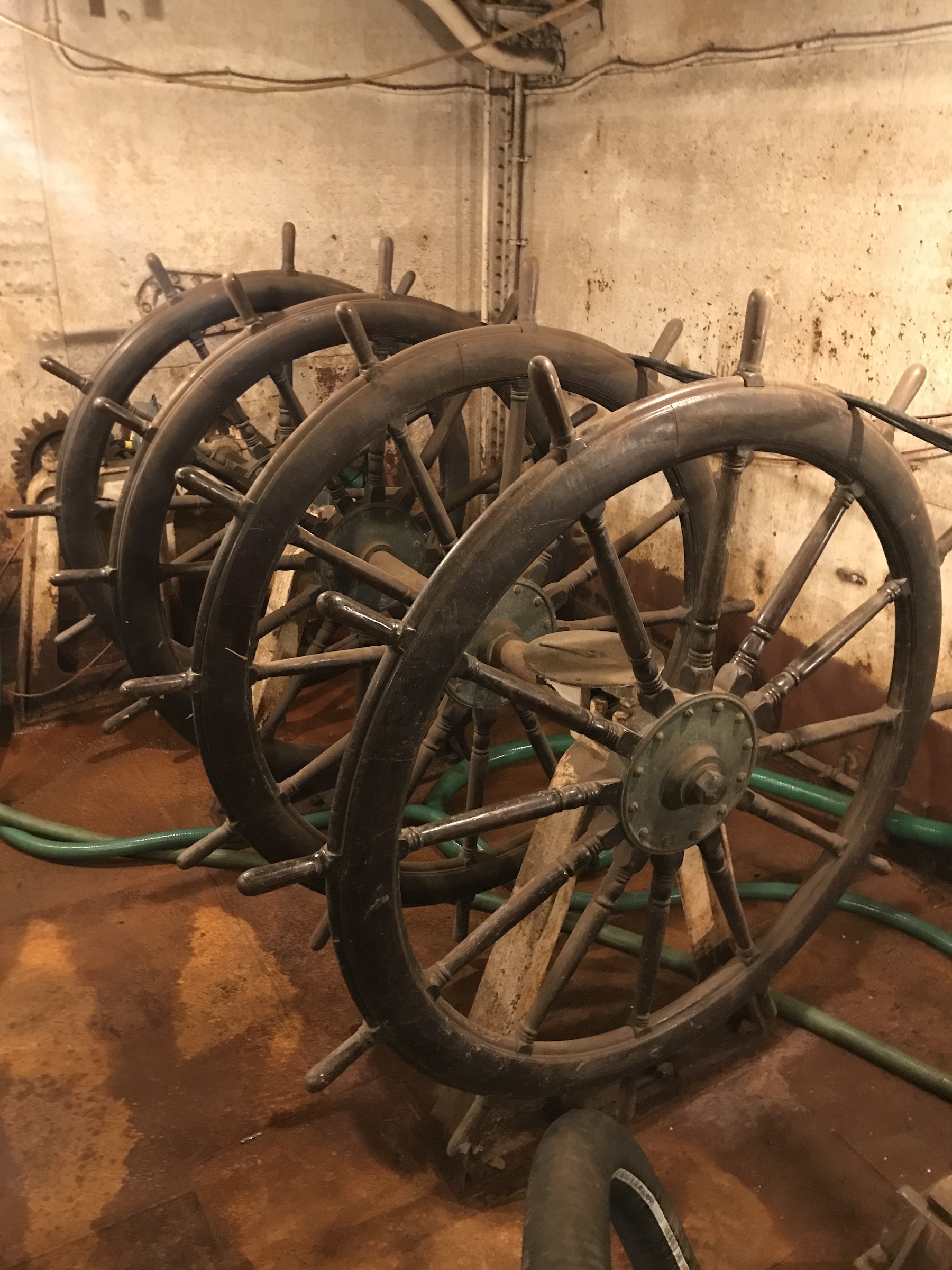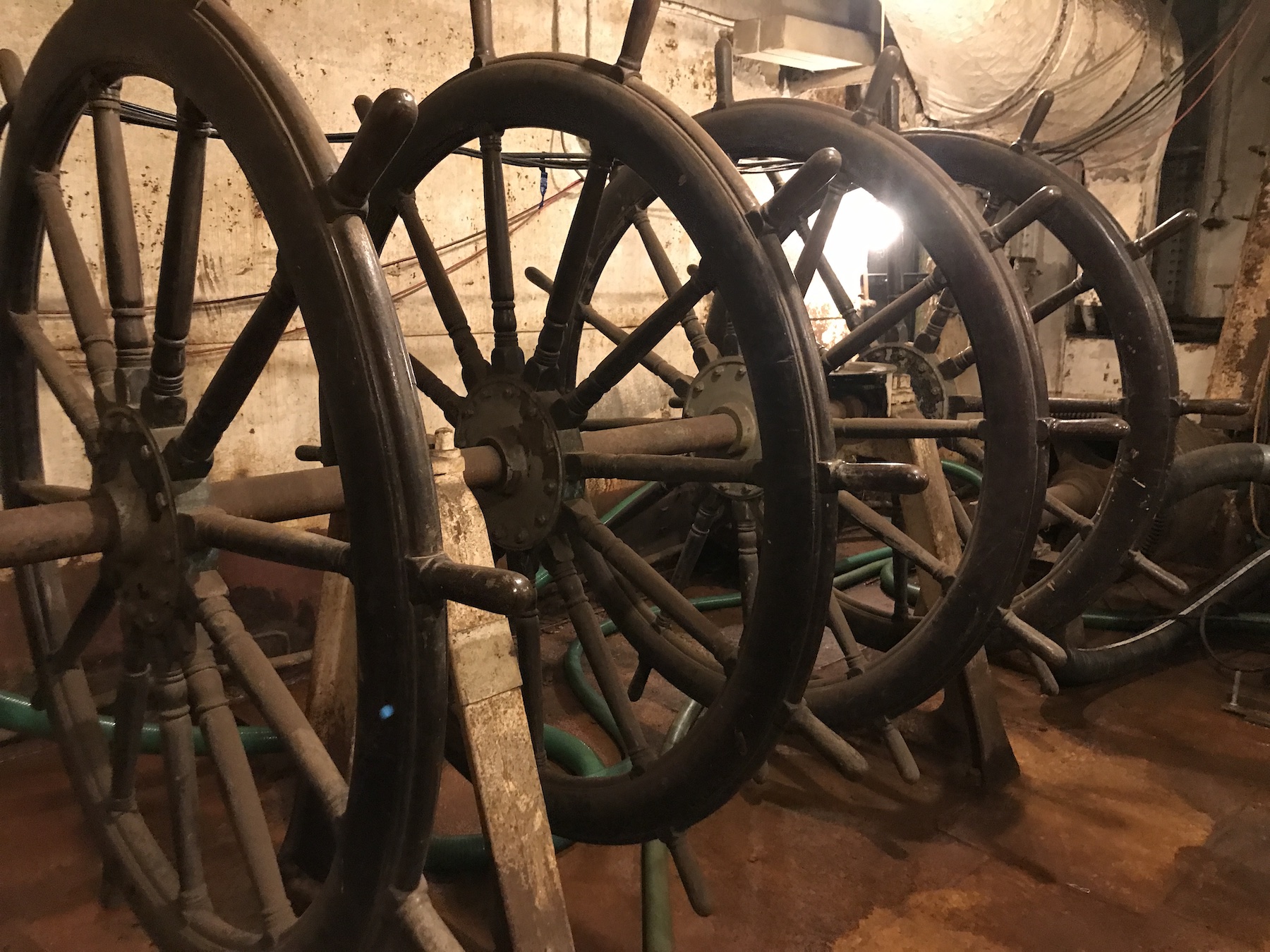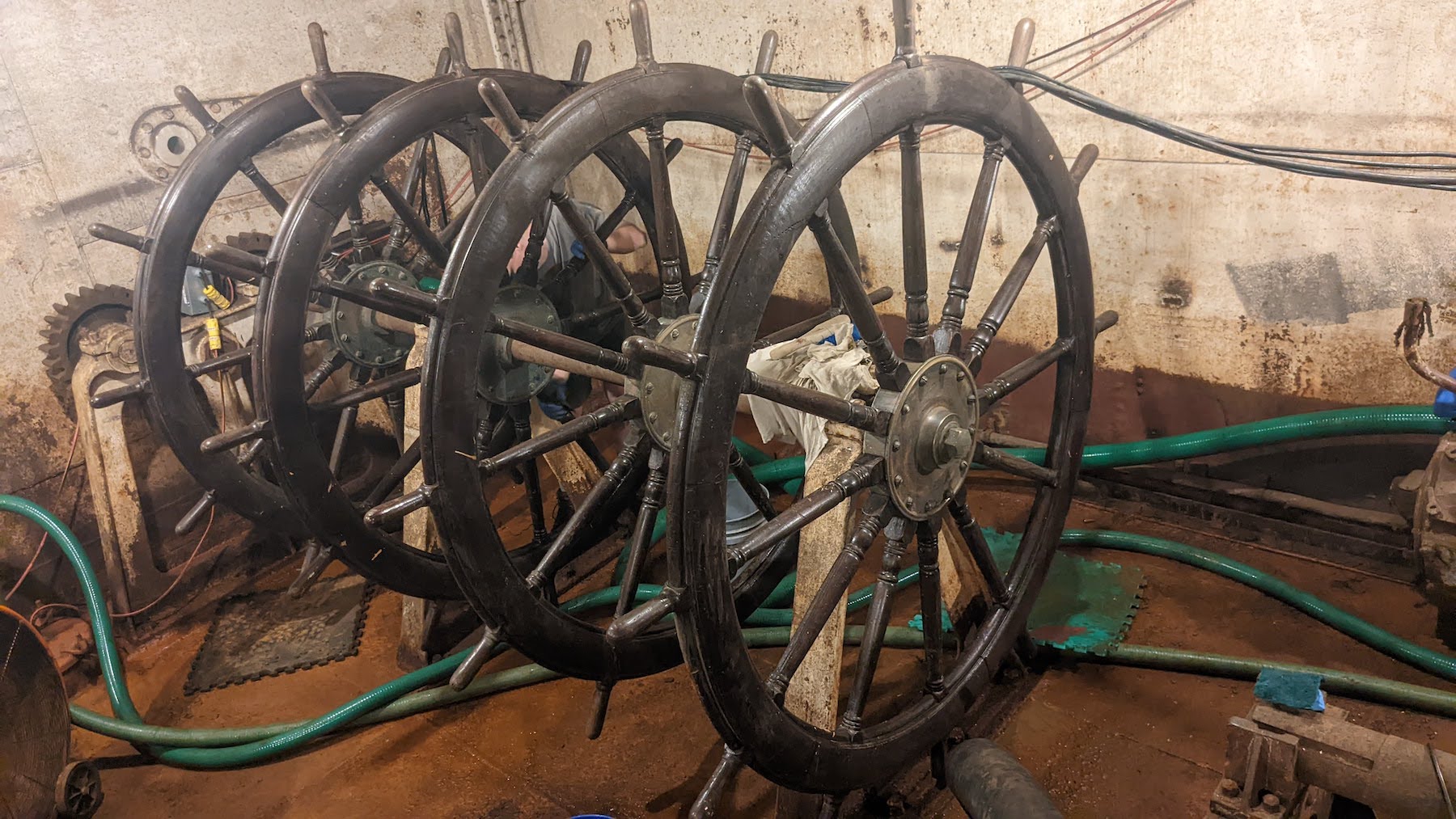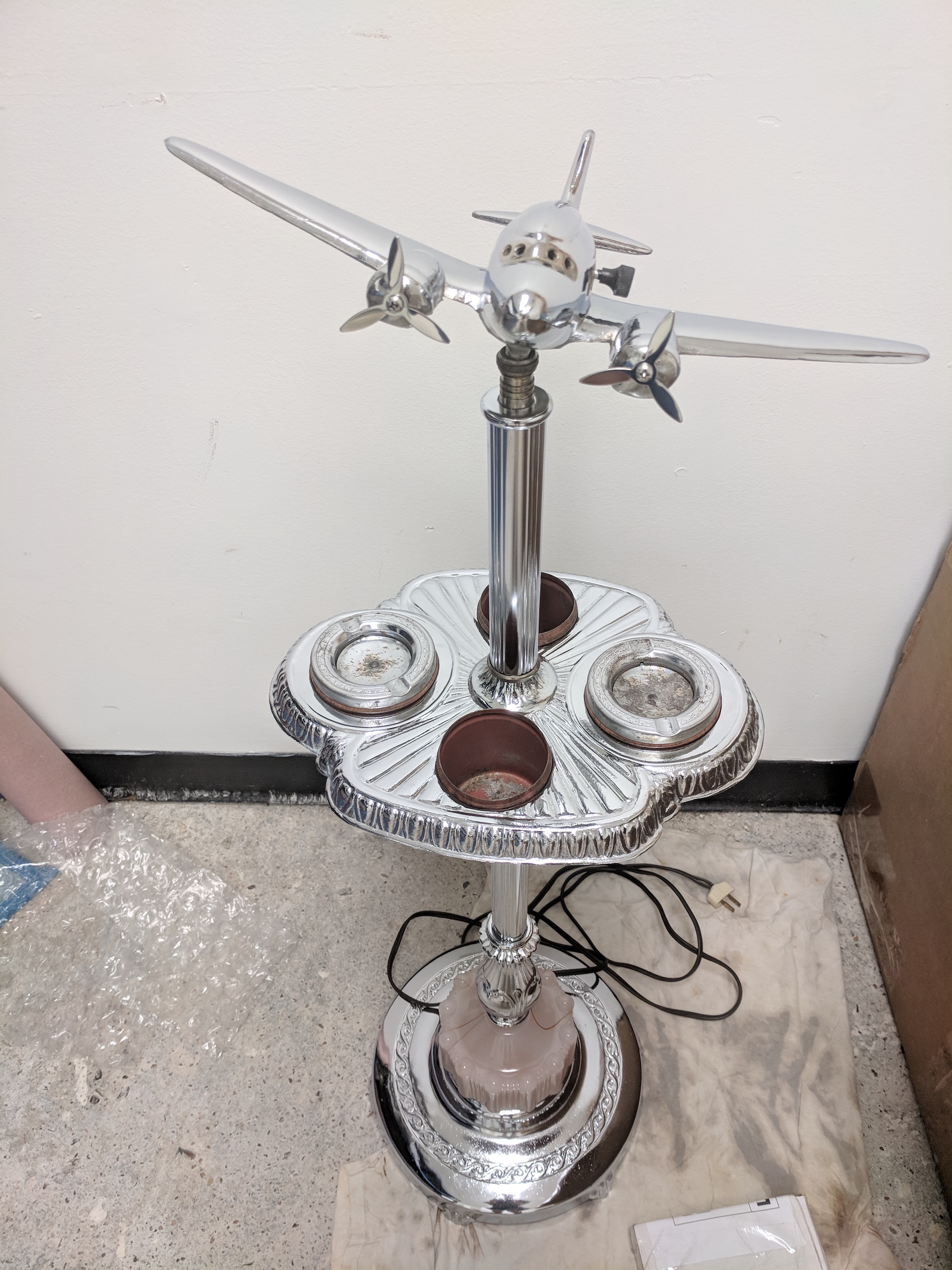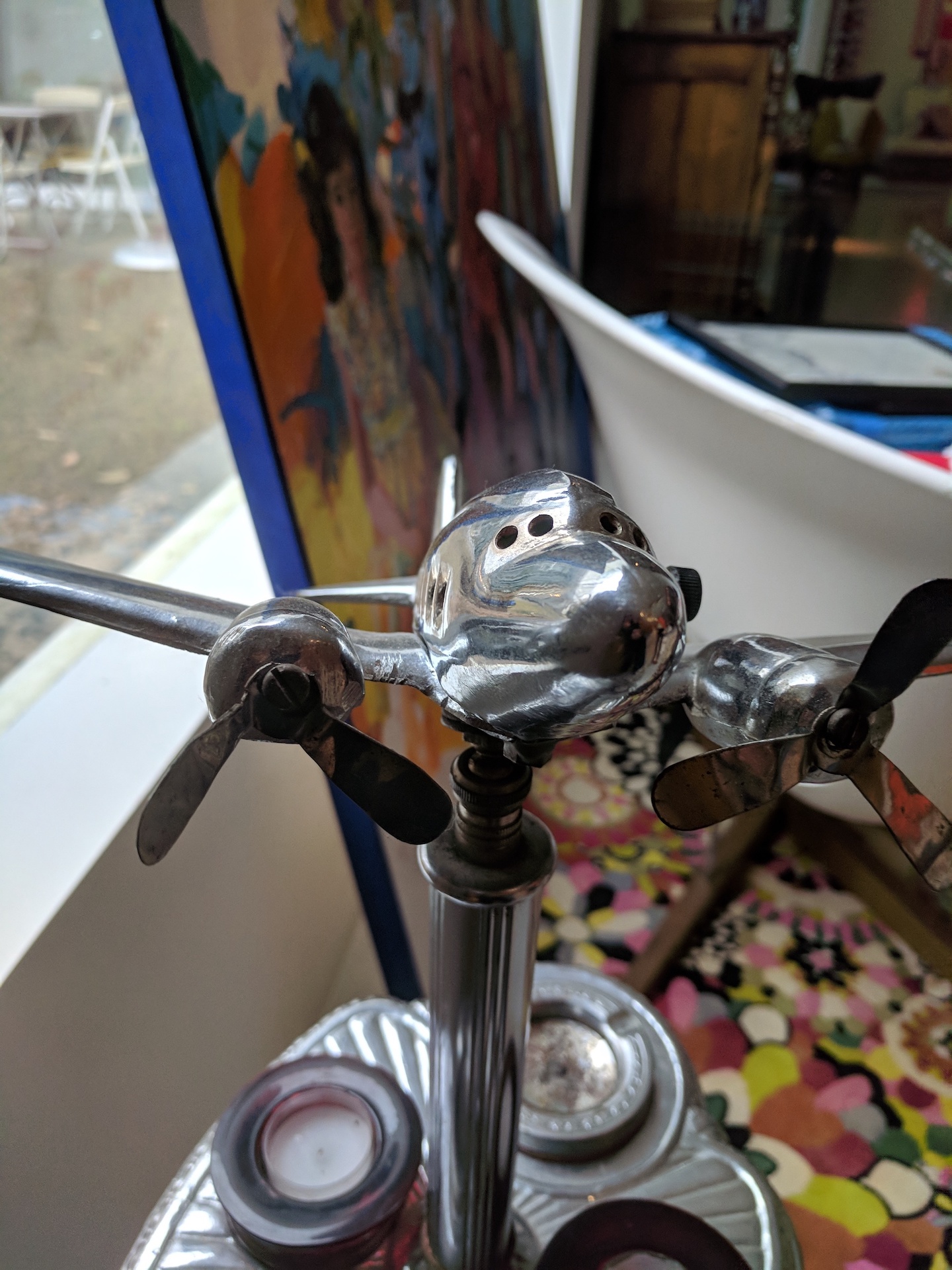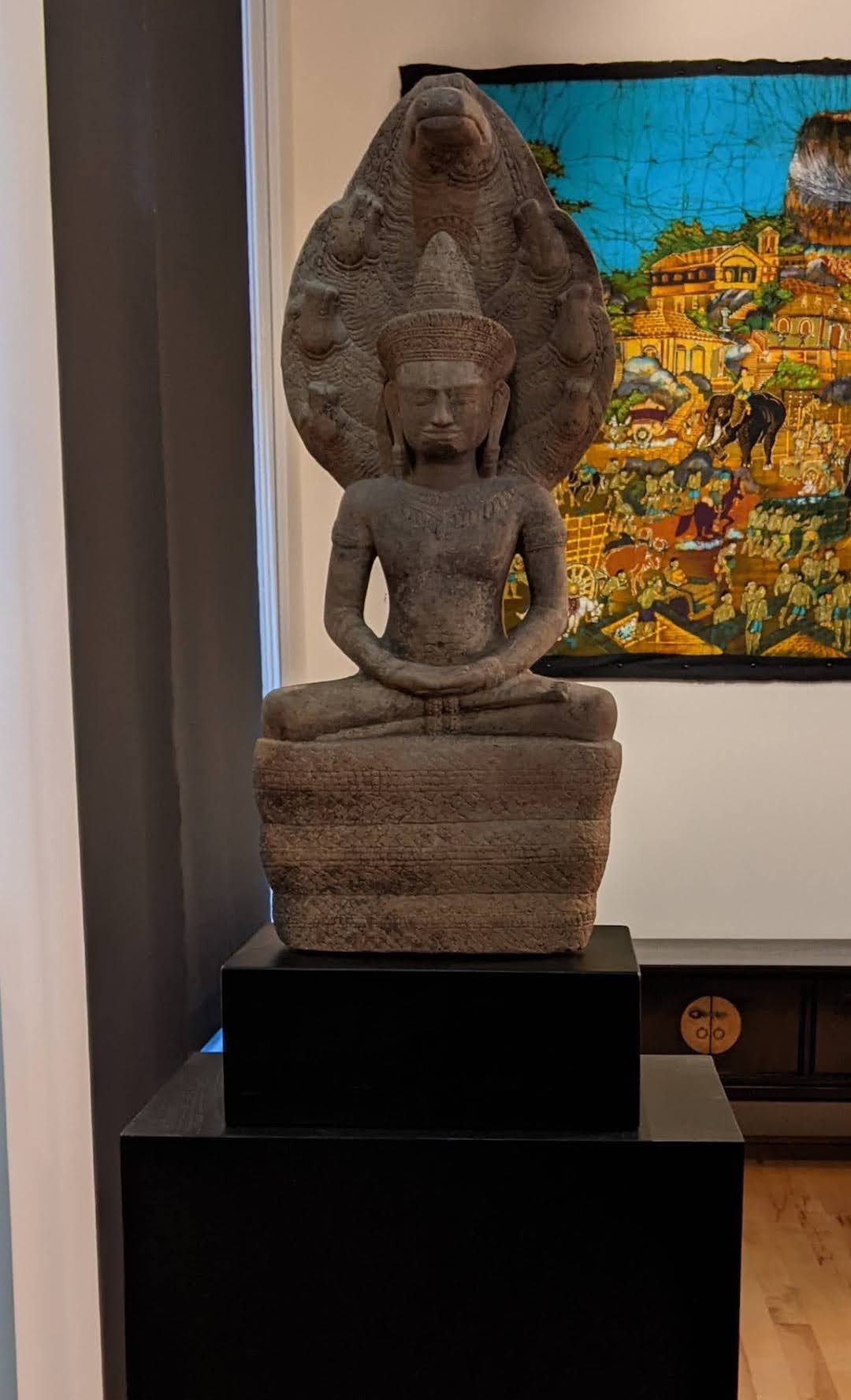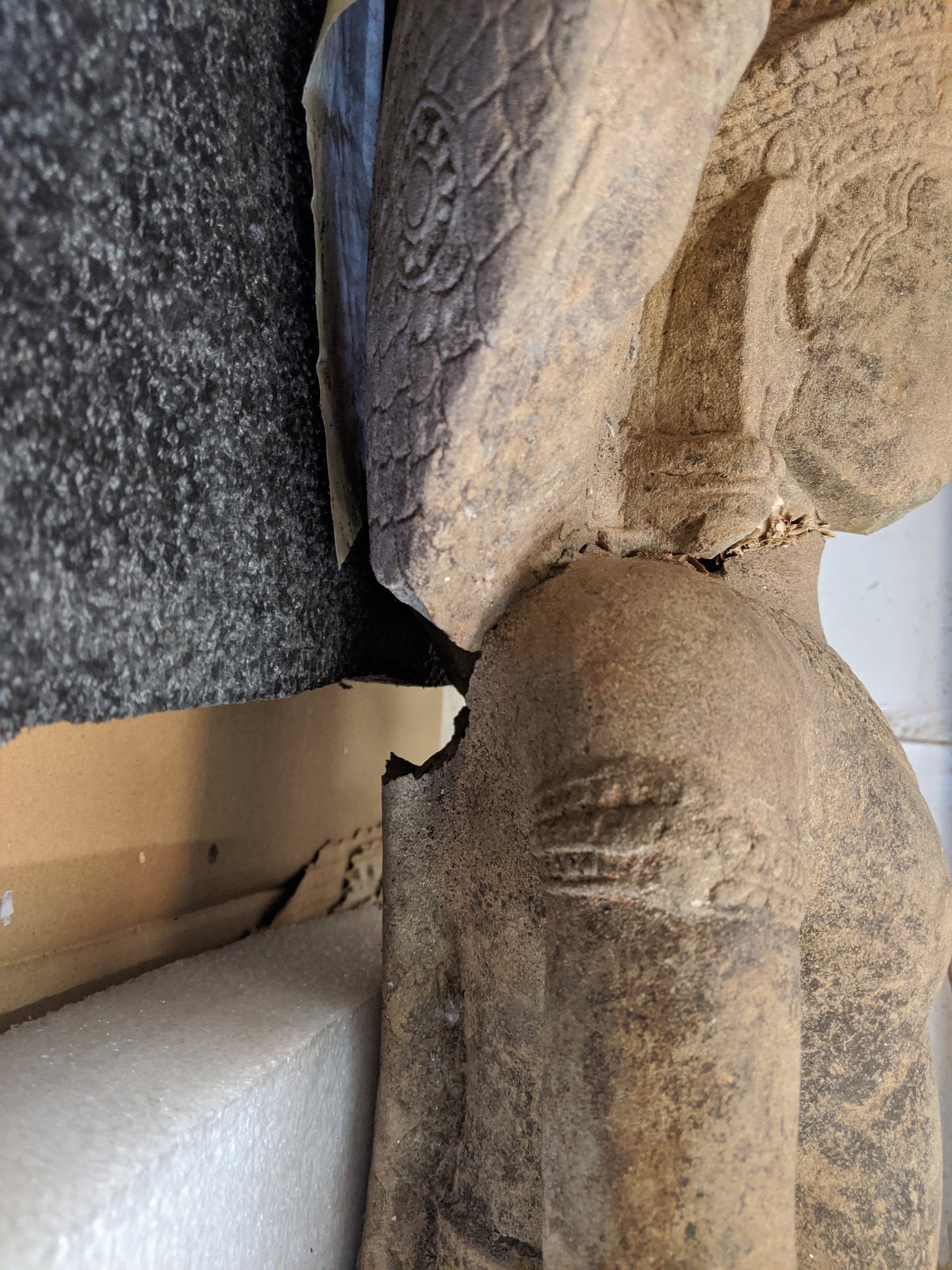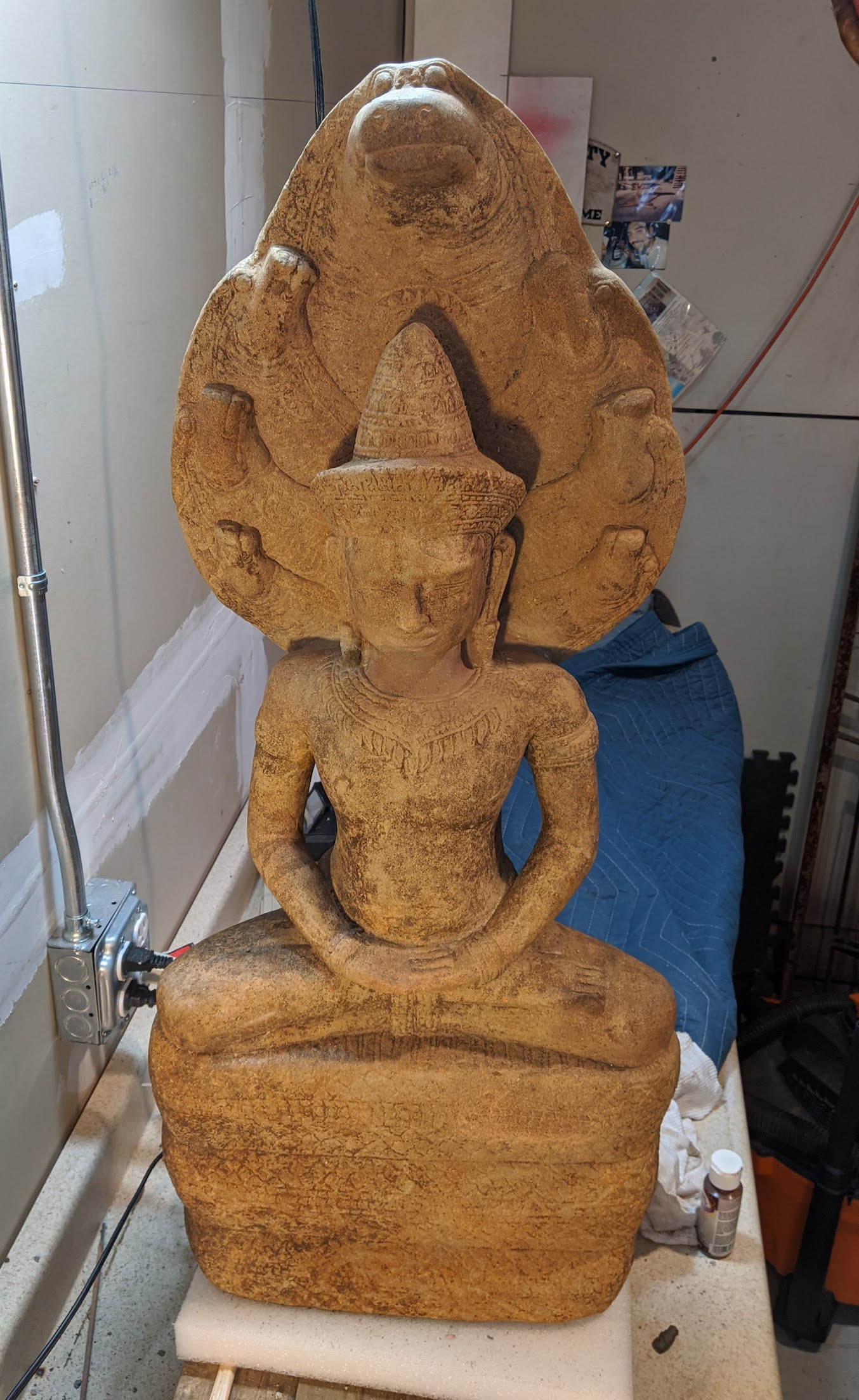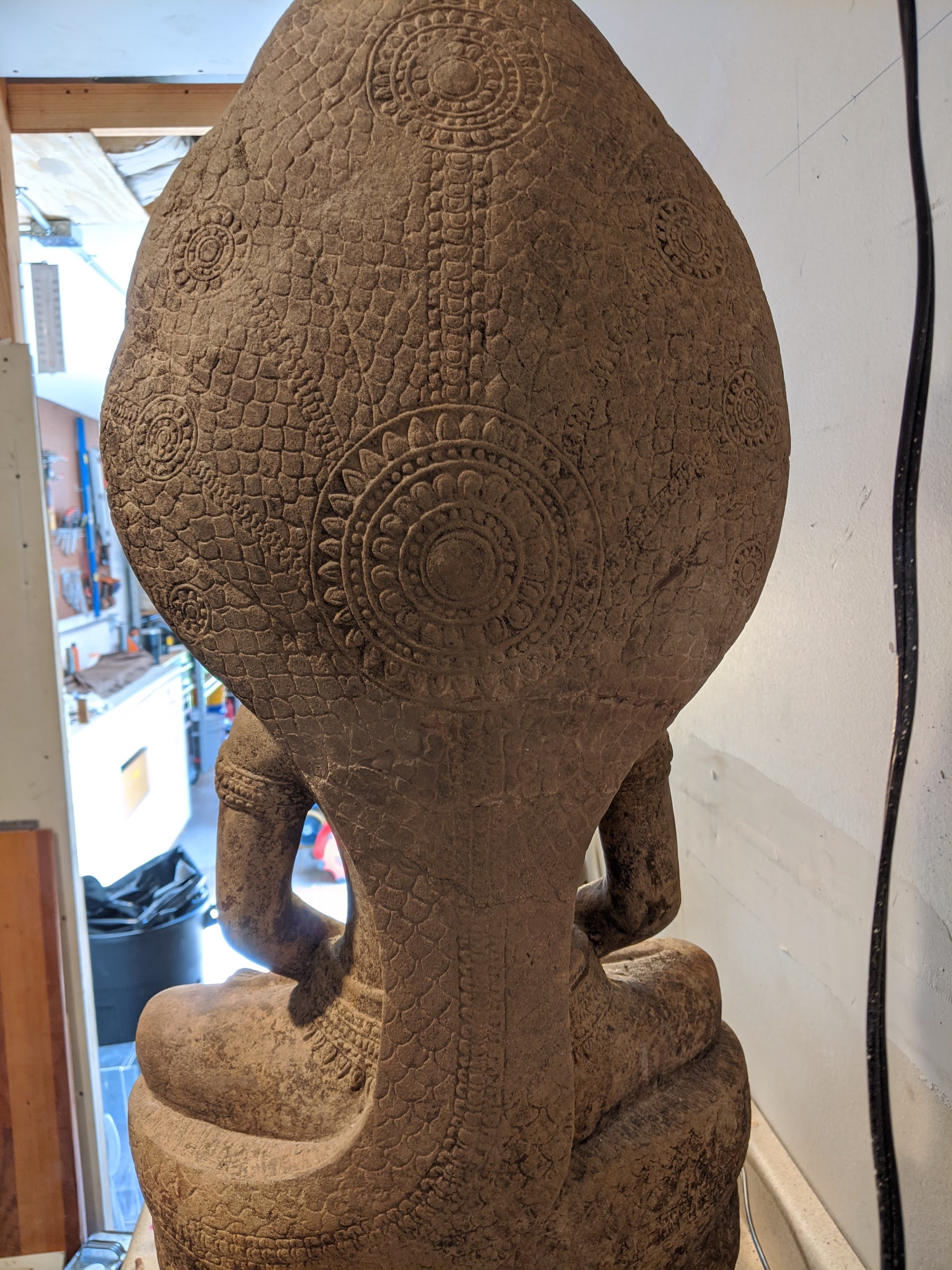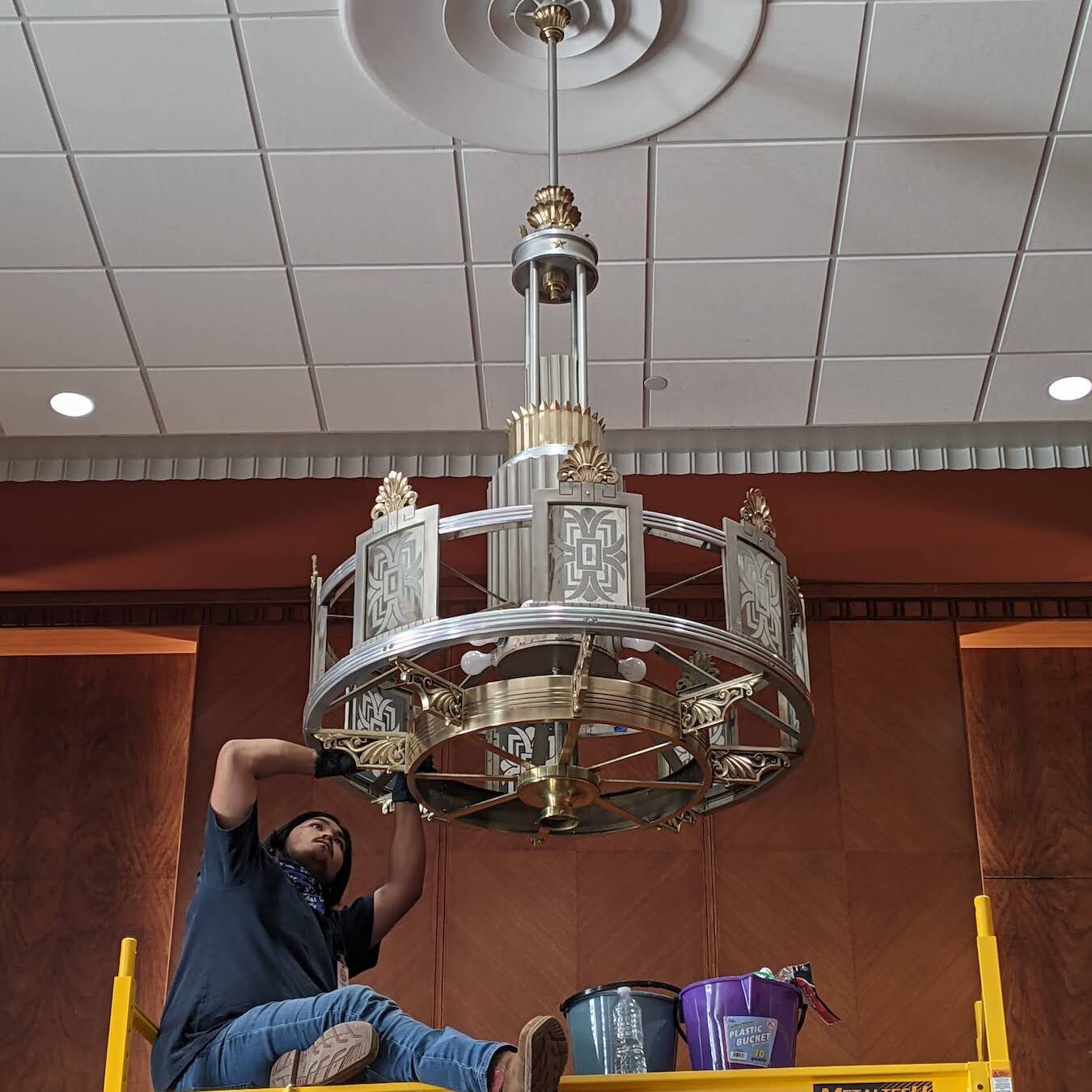
Importance of Preservation
Our goal is to preserve the initial intent of an object's fabrication by maintaining the original materials.
Alongside the conservation, we document, research, and analyze the object's state to ensure its integrity for future generations.
Following the AIC Code of Ethics, we hold these practices to the highest standards throughout our decision making process.
Restoration
Restoration of the Sacred Heart of Jesus Blessing Statue
Spring 2024
OnAim restored the historic zinc Sacred Heart of Jesus statue that graced the front of the old Co-Cathedral in Downtown Houston for many years. It was one of the pieces that was saved to now welcome the community at the new Archbishop Fiorenza Plaza, located at the corner of St. Joseph and San Jacinto, directly across from the entrance to the Co-Cathedral of the Sacred Heart.
Read more about the restoration efforts.
Restoration
USS Texas Map of the Atlantic Theater
Summer 2023
OnAim Conservation was hired to stabilize, conserve, and restore a map of the Atlantic theater in the Captain's Cabin in the USS Texas. This map, which date estimations place it post 1944, was painted over in white sometime after 1966. It was then discovered by accident around 2000 due to some of the white paint starting to flake off. Conservation efforts started in the Summer of 2022, stabilizing the map in its current state.
After stabilization, the ship was moved into dry dock to start its major restoration work. OnAim continued work on the map in 2023, slowly removing the remaining white layer of paint which revealed some exciting discoveries.
OnAim completed the paint infill restoration with the help of Kati Ozanic, a local painter, teacher, and artistic director. Using the newly unearthed original sections and historical maps from the era as guides, the map’s missing sections were restored. Finally, OnAim applied a varnish to protect the map for future generations to experience.
Learn more about this project in our blog post Unearthing and Restoring a Map of the Atlantic Theater on the USS Texas.
Conservation
Mastodon Tusk
Spring 2023
This mastodon tusk's cracks and imperfections were filled over the years with many materials, including resin, vinyl ester, and an unknown substance. The tusk was coated in a tinted varnish which further obscured it's detail and texture.
OnAim Conservation removed the fillings and varnish to reveal the detail in the tusk. Instead of covering the cracks, as they were previously, the cracks were filled but left visible to highlight the natural features, patina, and prehistoric age of the object. OnAim also added additional supports to cushion and stabilize the tusk. Finally, the tusk was sealed using UV-protectant to shield the tusk from harmful light.
Learn more about this project in our blog post Restoring a Mastodon Tusk.
Conservation
Various Art Deco Lamps & Chandeliers at Houston City Hall
Spring 2021
What was thought to be a patina original to the design was a combination of slight oxidation, tarnish, and a heavy hardened tar residue that was caused by previous policy of allowing smoking indoors. A combination of inherent moisture in the air and tar residue caused dust particles to adhere to all horizontal metal surfaces.
Focusing on one fixture at a time, all glass components were removed, cleaned and buffed, then set aside. With glass safely set aside OnAim utilized a small shop vac, chip brush, and a soft bristle toothbrush to carefully remove all dust and dirt particles. The structure was then cleaned and polished using metal polish, steel wool, and cloth rags.
Restoration
USS Texas Ship Propeller & Hardware
This several ton propellor was part of a 3 month restoration for parts of the USS Texas. The propellor was first cleaned and sanded to remove any corrosion and biological build-up from the blades being submerged in water. OnAim then began a multi-week operation of polishing and sanding to restore the bronze propellor blades to it's best possible quality and shine. This project included cleaning and restoring the propellor's hardware including the base plates as well as any bolts and screws.
Conservation
Battleship Texas "Ship's Bell", circa 1913
The bell had heavy oxidation, large sections missing along the bottom, with various dents, dings and scratches. Due to prior metal work done on and around the bell there was notable damage from high temperature steel slag all along the exterior with some spots having slag embedded in the surface. OnAim combatted the heavy ferrous oxide accumulation and staining in the smaller divots manually, followed by a mechanical polishing. Finally, OnAim applied a wax treatment on the exterior and interior of the Bell, then buffed to a shine.
Conservation
USS Texas Manual Rudder Steering Wheels
The wheels were first cleaned with a solution of clean water combined with a mild degreaser using plastic bristle scrub brushes along with light abrasive scouring pads, followed by a rinsing using clean water and cotton rags. Once the wheels were dry, OnAim preceded by wiping down the wheel bodies and center bases with mineral spirits. Each wheel as well as the center bases were given 3 coats of a cold wax treatment applied using clean cotton rags and natural bristle brushes. This wax coating functions as a protective layer to minimize potential water or environmental damage. After all 3 coats were applied, the wheels were buffed til shine using soft clean rags.
Restoration
Vintage Airplane Cigarette Tray
Restoration
Sandstone Sculpture: "Meditating Buddha being shielded by Naga"
This Cambodian sandstone sculpture was broken in transport. The broken sections were first cleaned then dry fitted together to visually note discrepancies along the fracture line. Using specialized syringes, sandstone colored non-sanded grout was injected along fracture lines and a colored acrylic medium was applied to faux a patina in order to better hide evidence of breakage. All epoxy adhesive previously used on the piece was left as is so as not to risk further damage by trying to remove it. OnAim constructed a new base to ensure the sculpture securely stood in an upright position at its final destination.


